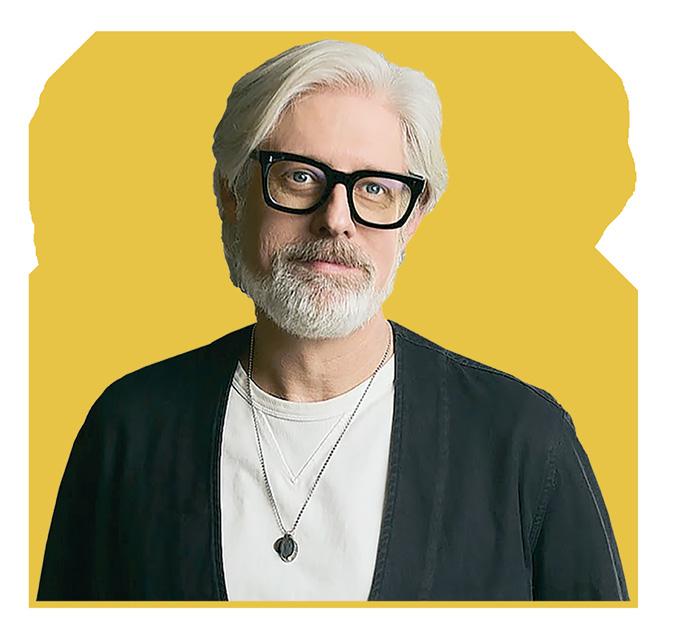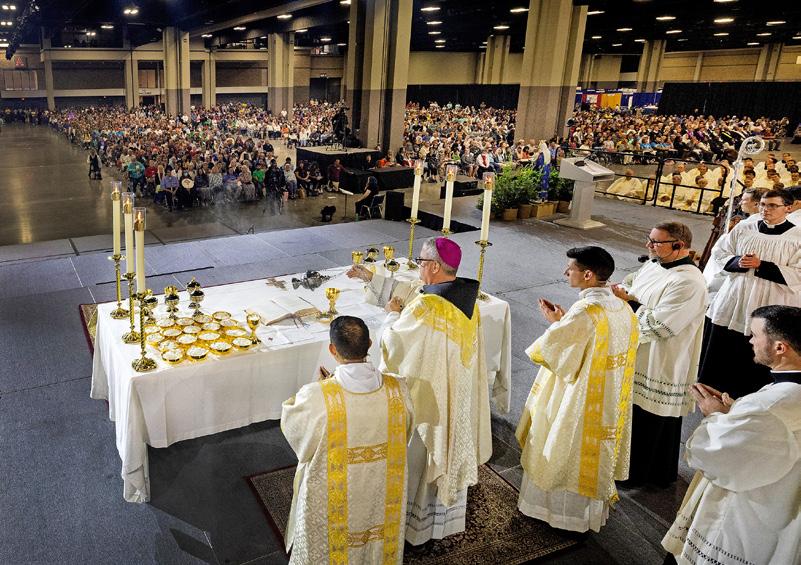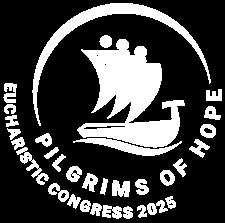
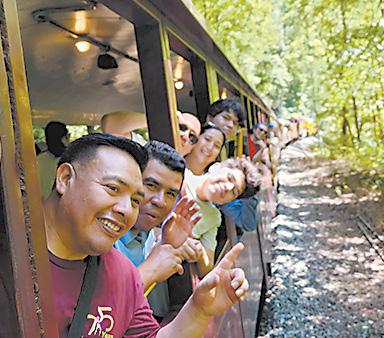
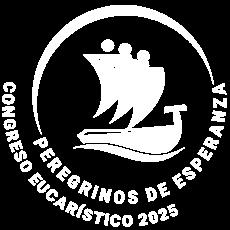




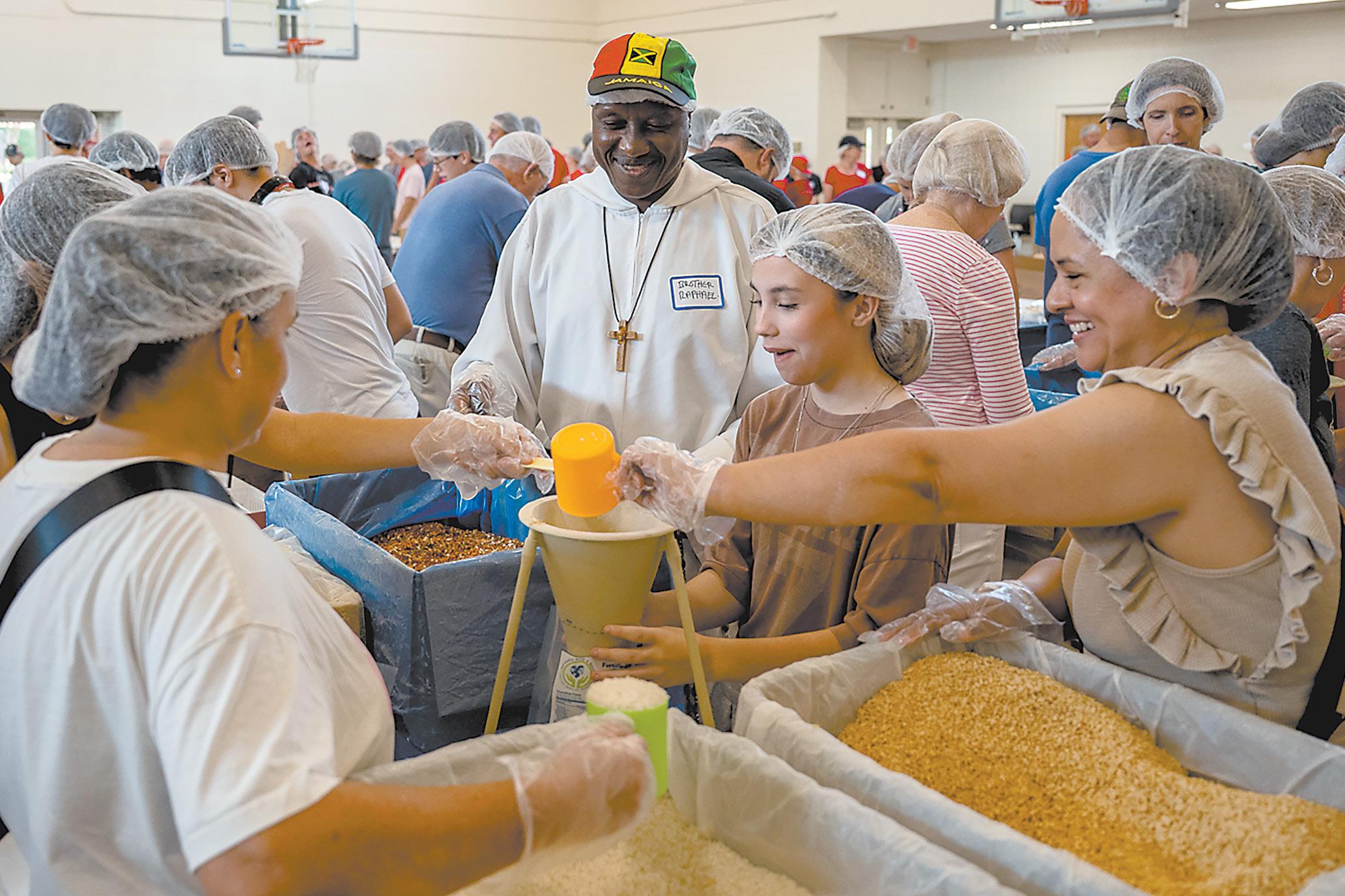

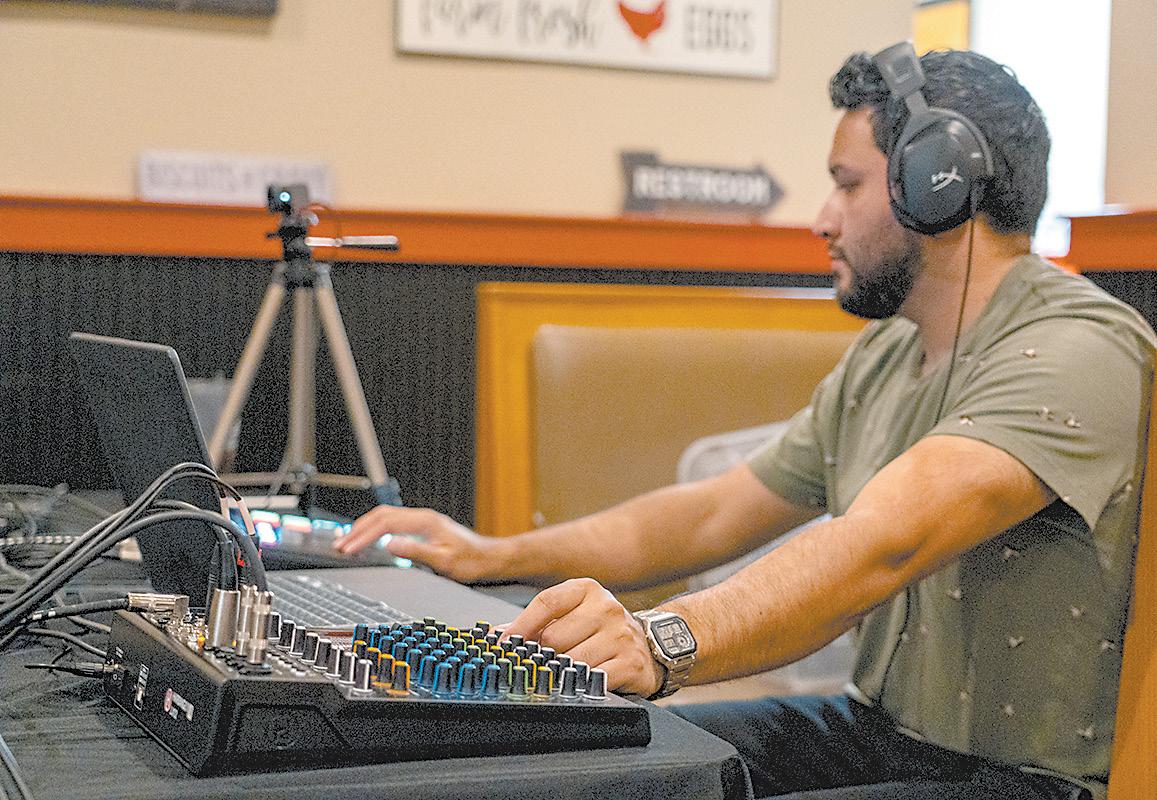
AUGUST 29, 2025
VOLUME 34 • NUMBER 23
1123 S. CHURCH ST. CHARLOTTE, N.C. 28203-4003 catholicnews@rcdoc.org
704-370-3333
PUBLISHER
The Most Reverend Michael T. Martin, OFM Conv., Bishop of Charlotte











AUGUST 29, 2025
VOLUME 34 • NUMBER 23
1123 S. CHURCH ST. CHARLOTTE, N.C. 28203-4003 catholicnews@rcdoc.org
704-370-3333
PUBLISHER
The Most Reverend Michael T. Martin, OFM Conv., Bishop of Charlotte
Carlo Acutis is one of two men who will be canonized Sept. 7 by Pope Leo XIV. (Read about Blessed Pier Giorgio Frassati on page 20.) The teenage mystic, who will be the Catholic Church’s first millennial saint, has captured the imagination of youth around the world. Since he lived his brief life – he died in 2006 at the age of 15 – in today’s world, his story resonates with a generation of Catholic youth who have grown up with technology.
EDITOR: Trish Stukbauer 704-370-3392, tmstukbauer@rcdoc.org
ADVERTISING MANAGER: Kevin Eagan 704-370-3332, keeagan@rcdoc.org
MULTIMEDIA DESIGNER: David Puckett 704-808-4521, dwpuckett@rcdoc.org
EDITORIAL TEAM: Kimberly Bender 704-370-3394, kdbender@rcdoc.org Lisa Geraci 704-370-3294, lmgeraci@rcdoc.org Troy C. Hull 704-370-3288, tchull@rcdoc.org Christina Lee Knauss 704-370-0783, clknauss@rcdoc.org Brian Segovia 704-370-3235, bmsegovia@rcdoc.org
COMMUNICATIONS ASSISTANT/CIRCULATION: Amelia Kudela 704-370-3333, catholicnews@rcdoc.org
COMMUNICATIONS DIRECTOR: Liz Chandler 704-370-3336, lchandler@rcdoc.org
ASSISTANT COMMUNICATIONS DIRECTOR: Patricia L. Guilfoyle 704-370-3334, plguilfoyle@rcdoc.org
THE CATHOLIC NEWS HERALD is published by the Roman Catholic Diocese of Charlotte 26 times a year.
NEWS: The Catholic News Herald welcomes your news and photos. Please e-mail information, attaching photos in JPG format with a recommended resolution of 150 dpi or higher, to catholicnews@rcdoc.org All submitted items become the property of the Catholic News Herald and are subject to reuse, in whole or in part, in print, electronic formats and archives.
ADVERTISING: Reach 165,000 Catholics across western North Carolina! For advertising rates and information, contact Advertising Manager Kevin Eagan at 704-370-3332 or keeagan@rcdoc.org. The Catholic News Herald reserves the right to reject or cancel advertising for any reason, and does not recommend or guarantee any product, service or benefit claimed by our advertisers.
SUBSCRIPTIONS: $17.25 per year for registered families of the Diocese of Charlotte and $25 per year for all others
POSTMASTER: Periodicals Class postage (USPC 007-393) paid at Charlotte, N.C. Send address corrections to the Catholic News Herald, 1123 S. Church St., Charlotte, N.C. 28203.

PRAYER SERVICES
Born in 1991 in London and raised in Milan, Italy, Carlo Acutis has been described as “a normal teenager” with a knack for computers. What was unique was his intense devotion to the Eucharist. He had his first Holy Communion at the age of 7. He was convinced that people wouldn’t be able to stay away from Mass if they knew about the dozens of Eucharistic miracles recognized by the Church. So at age 11, he began to research –leading his parents from shrine to shrine to take pictures for a website that he built and which still remains active: www.miracolieucaristici.org. The content is featured in a traveling exhibition that will be featured at the Diocese of Charlotte’s 2025 Eucharistic Congress on Sept. 5-6.
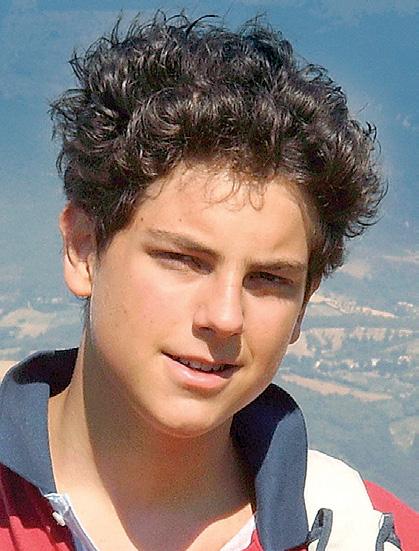
Acutis has become known as an innovative Catholic influencer for his use of technology and art, and his example has caught on. Three teenage brothers in Ireland created a stop-action Lego animation film about his life. An artist from Assisi created two mosaic portraits out of 1,000 toys each – one is housed in the Vatican’s youth center and the other in Blessed Carlo Acutis Parish in northwest Chicago. A bronze statue by Canadian artist Timothy Schmalz that stands outside his tomb in Assisi features him in jeans and a sweatshirt, wearing a backpack and holding his laptop.
Learn more about the soon-to-be saint by watching the new documentary “Carlo Acutis: Roadmap to Reality” during the 2025 Eucharistic Congress. The movie, which offers a compelling path forward for today’s tech-obsessed world, will be screened at 9 p.m. Friday, Sept. 5, in Exhibit Hall A-B, then again at 1 and 3 p.m. Saturday, Sept. 6. — Catholic News Herald and OSV News

Scan the QR code for this week’s recommended recipes, crafts and activities:

25TH AND 50TH WEDDING ANNIVERSARY MASS : 3 p.m. Sunday, Oct. 26, St. Patrick Cathedral, 1621 Dilworth Road East, Charlotte. Bishop Michael Martin will celebrate the diocese’s annual Mass for couples commemorating their 25th or 50th wedding anniversaries. Reception to follow. Register at www.charlottediocese.org/form-wedding-anniversary-mass.
EVENTS
ST. PEREGRINE HEALING PRAYER SERVICE : 7 p.m. every fourth Thursday of the month, St. Matthew Church chapel, 8015 Ballantyne Commons Pkwy., Charlotte. Includes a blessing with the relic of St. Peregrine. For details, go to www.stmatthewcatholic.org/st-peregrine.
SUPPORT GROUPS
CATHOLIC GRANDPARENTS GROUP : A prayer and support group for Catholic grandparents has launched in the Charlotte area. Learn more at www.catholicgrandparentsassociation.org.
RACHEL RETREAT ‘HEALING AFTER ABORTION’: Are you or a loved one seeking healing from the effects of a past abortion? Find healing and support in a confidential, non-judgmental environment at a Rachel Retreat weekend. These retreats are offered by the Diocese of Charlotte’s Family Life Office for men and women, in English and Spanish. For details, call 704-370-3229.

Bishop Michael Martin, OFM Conv., will participate in the following events over the coming weeks:
AUG. 31 – 11 A.M.
Pastor Installation St. John the Baptist Church, Tryon
SEPT. 10 – 12:10 P.M.
SEPT. 5-6
Eucharistic Congress Charlotte Convention Center, Charlotte

Hope is knowing that God is near and love will win
Christian hope is not about avoiding pain and suffering but about knowing that God gives people the strength to persevere and to love even when things go wrong, Pope Leo XIV said.
When Jesus allowed Himself to be arrested in the Garden of Gethsemane, He showed that “Christian hope is not evasion, but decision,” the pope told thousands of people gathered in the Vatican audience hall Aug. 27 for his weekly general audience.
“The way that Jesus exercised his freedom in the face of death teaches us not to fear suffering, but to persevere in confident trust in God’s providential care,” the pope said in his address to English speakers.
“If we surrender to God’s will and freely give our lives in love for others, the Father’s grace will sustain us in every trial and enable us to bear abundant fruit for the salvation of our brothers and sisters,” he said.
A person of faith, the pope said, does not ask God “to spare us from suffering, but rather to give us the strength to persevere in love, aware that life offered freely for love cannot be taken away by anyone.”
Jesus lived every day of His life as preparation for the “dramatic and sublime hour” of His arrest, His suffering and His death, the pope said. “For this reason, when it arrives, He has the strength not to seek a way of escape. His heart knows well that to lose life for love is not a failure, but rather possesses a mysterious fruitfulness, like a grain of wheat that, falling to the ground, does not remain alone, but dies and becomes fruitful.”
Naturally, Pope Leo said, Jesus “is troubled when faced with a path that seems to lead only to death and to the end. But He is equally persuaded that only a life lost for love, at the end, is ultimately found.”
“This is what true hope consists of: not in trying to avoid pain, but in believing that even in the heart of the most unjust suffering, the seed of new life is hidden,” he said.
After spending more than 90 minutes greeting people in the audience hall, Pope Leo went into St. Peter’s Basilica, where hundreds of people who did not get a place in the hall had been watching the audience and waiting for their turn to see the pope. The pope thanked them for their patience, which, he said, “is a sign of the presence of the Spirit of God, who is with us. So often in life, we want to receive a response immediately, an immediate solution, and for some reason God makes us wait.”
Eucharistic Adoration is the source and summit of our faith lives
Eucharistic Adoration is one of the more popular devotions among Catholics today, and it’s not hard to see why. The Second Vatican Council calls the Eucharist the “source and summit of the Christian life.” If you think about what that means, it’s pretty amazing. It means that the Eucharist is both where our life of faith begins and simultaneously the highest pinnacle to which we can ascend here on earth.
It rightly calls to mind Jesus saying, “I am the Alpha and Omega, the first and the last, the beginning and the end” (Rev 22:13). The Eucharist is the source and summit because the Eucharist is truly Christ present among us.
The normal context for celebrating and receiving the Eucharist is in the liturgy of the Mass, so where did the practice of Eucharistic Adoration start? According to Fr. John Hardon, SJ, in The History of Eucharistic Adoration, there is evidence of hermits keeping the Blessed Sacrament reserved in their cells from at least the third century. Since the earliest faith of the Apostolic Church testifies to belief in the Real Presence of Christ in the Eucharist, it follows that the reserved Eucharist would become a focal point of prayer and worship.
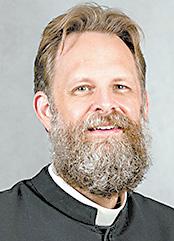
According to the Catechism of the Catholic Church, adoration is defined as “the first act of the virtue of religion” and the acknowledgement of God as “God, the Creator and Savior, the Lord and Master of everything that exists” (CCC 2096). In other words, adoration is what we commonly call “worship” today. Eucharistic Adoration simply means worship of God present in the Holy Eucharist. This is true whether the Eucharist is exposed on the altar or veiled within the tabernacle.
The Church encourages the faithful to make frequent visits to the Blessed Sacrament reserved in parish churches and chapels in order to “draw them into an ever deeper share in the paschal mystery” (Order for the Solemn Exposition of the Holy Eucharist).
Even if a church has limited scheduled times for Eucharistic exposition, any time spent worshiping Jesus sacramentally present in the tabernacle is a time of Eucharistic Adoration.
That being said, the practice of exposing the Eucharist on the altar for veneration by the faithful is to be encouraged. There are certain requirements for Eucharistic exposition, however. Even though there is a great degree of flexibility in what sorts of prayers or devotions may take place exposition, the rite of exposition is regulated by the liturgical norms of the Church.
The ordinary minister of exposition is a priest or deacon, although “if they are prevented by some good reason” the Eucharist may be exposed by “an [instituted] acolyte or by another extraordinary minister of Holy Communion, or someone deputed by the local Ordinary” (HC 91). Only an ordained minister may impart a blessing with the sacrament, which we call “benediction.” Most importantly, exposition of the Eucharist “may take place only if a suitable number of the faithful is expected to be present” (HC 86). The Church does
AUG. 31-SEPT. 6
Sunday: Sir 3:17-18, 20, 28-29, Ps 68:4-5, 6-7, 10-11, Heb 12:18-19, 22-24a, Lk 14:1, 7-14
Monday: 1 Thes 4:13-18, Ps 96:1 and 3, 4-5, 11-12, 13, Lk 4:16-30
Tuesday: 1 Thes 5:1-6, 9-11, Ps 27:1, 4, 13-14, Lk 4:31-37
Wednesday (Memorial of St. Gregory the Great, Pope and Doctor of the Church): Col 1:1-8, Ps 52:10, 11, Lk 4:38-44
Thursday: Col 1:9-14, Ps 98:2-3ab, 3cd-4, 5-6, Lk 5:1-11
Friday: Col 1:15-20, Ps 100:1b-2, 3, 4, 5, Lk 5:33-39
Saturday: Col 1:21-23, Ps 54:3-4, 6 and 8, Lk 6:1-5
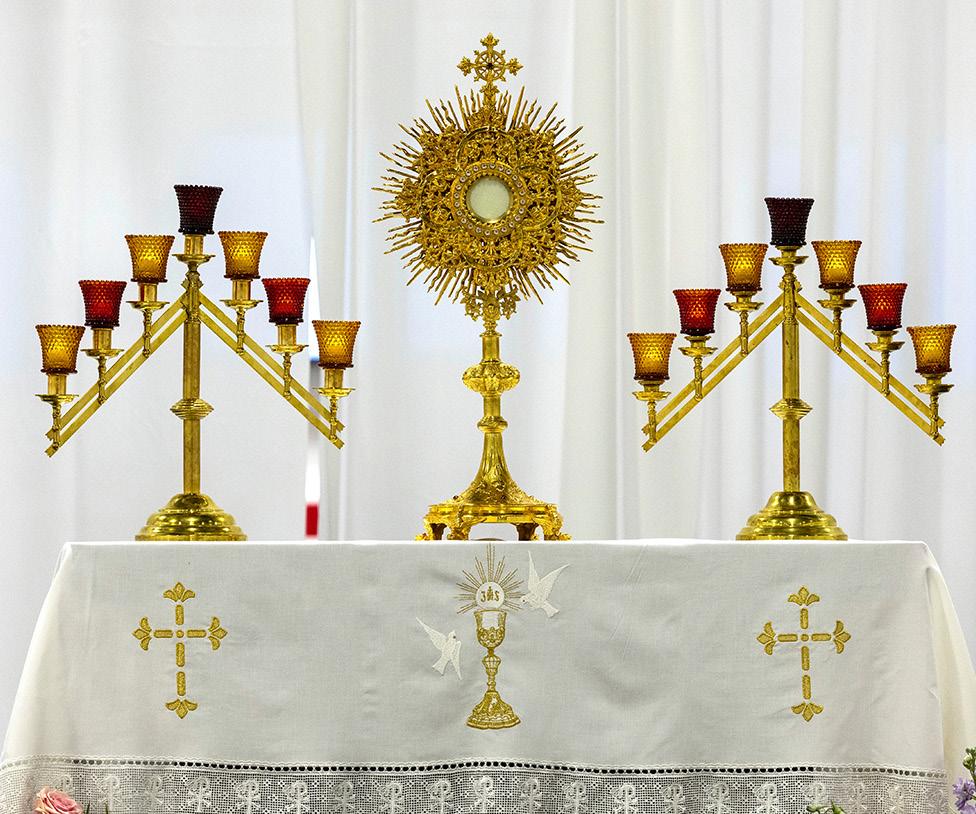
not envision Eucharistic exposition as something done for individual devotion, but as an act of communal worship. There can be no adoration without adorers.
The liturgical texts of the Church allow for various forms of Eucharistic exposition, some more solemn and others more simple. Many are accustomed to seeing the Eucharist exposed in a monstrance – a liturgical item that resembles a sunburst. Alternatively, the Eucharist may be simply exposed on the altar in a ciborium (the vessel used to hold the consecrated Eucharist in the tabernacle).
Whether simple or solemn, silent or full of Scripture and song, the time spent in prayer before Christ in the Sacrament is meant to, in the words of the Church, “extend that union with him, which [we] have reached in Communion, and renew that covenant, which urges [us] to maintain in [our] morals and [our] life what [we] have received in the celebration of the Eucharist” (HC 81).
In other words, the practice of Eucharistic Adoration is meant to extend our worship of Christ that flows from the sacrifice of the Mass, to deepen our desire for Holy Communion, and renew our commitment to live in such a way that bears witness to the presence of God among us and within us.
DEACON MATTHEW NEWSOME is the Catholic campus minister at Western Carolina University and the author of “The Devout Life: A Modern Guide to Practical Holiness with St. Francis de Sales,” available from Sophia Institute Press.
SEPT. 7-13
Sunday: Wisdom 9:13-18b, Ps 90:3-4, 5-6, 12-13, 14 and 17, Philem 9-10, 12-17, Lk 14:25-33
Monday (Feast of the Nativity of the Blessed Virgin Mary): Mic 5:1-4a or Rom 8:28-30, Ps 13:6ab, 6c, Mt 1:1-16, 18-23 or Mt 1:18-23
Tuesday (Memorial of Saint Peter Claver, Priest): Col 2:6-15, Ps 145:1b-2, 8-9, 10-11, Lk 6:12-19
Wednesday: Col 3:1-11, Ps 145:2-3, 10-11, 1213ab, Lk 6:20-26
Thursday: Col 3:12-17, Ps 150:1b-2, 3-4, 5-6, Lk 6:27-38
Friday: 1 Tim 1:1-2, 12-14, Ps 16:1b-2a and 5, 7-8, 11, Lk 6:39-42
Saturday (Memorial of Saint John Chrysostom, Bishop and Doctor of the Church): 1 Tim 1:15-17, Ps 113:1b-2, 3-4, 5 and 6-7, Lk 6:43-49
SEPT. 14-20
Sunday (Feast of the Exaltation of the Holy Cross): Num 21:4b-9, Ps 78:1bc-2, 3435, 36-37, 38, Phil 2:6-11, Jn 3:13-17
Monday (Memorial of Our Lady of Sorrows): 1 Tim 2:1-8, Ps 28:2, 7, 8-9, Jn 19:25-27 or Lk 2:33-35
Tuesday (Memorial of Saints Cornelius, Pope, and Cyprian, Bishop, Martyrs): 1 Tim 3:1-13, Ps 101:1b-2ab, 2cd-3ab, 5, 6, Lk 7:11-17
Wednesday: 1 Tim 3:14-16, Ps 111:1-2, 3-4, 5-6, Lk 7:31-35
Thursday: 1 Tim 4:12-16, Ps 111:7-8, 9, 10, Lk 7:36-50
Friday: 1 Tim 6:2c-12, Ps 49:6-7, 8-10, 17-18, 19-20, Lk 8:1-3
Saturday (Memorial of Saint Andrew Kim Tae-gŏn, Priest, and Paul Chŏng Ha-sang and Companions, Martyrs): 1 Tim 6:13-16, Ps 100:1b-2, 3, 4, 5, Lk 8:4-15
For the latest news 24/7: catholicnewsherald.com
New parochial vicar assigned to St.
CHARLOTTE — Bishop Michael Martin, OFM Conv., announces the appointment of Jesuit Father Mark P. Scalese as parochial vicar at St. Peter Parish effective Sept. 1.

A native of Scranton, Pennsylvania, Father Scalese entered the Jesuits in 1987 and was ordained in 1997. He has been an educator for much of his professional career, coming to Charlotte from Chicago, where he was Jesuit Superior of the First Studies Program at Loyola University for six years. Previously, Father Scalese was the director of campus ministry at Fairfield University in Connecticut as well as an associate professor in its Film, Television & Media Arts program.
He earned his Master of Fine Arts from Temple University and worked as a television producer for Frank Frost Productions in Washington, D.C., where he contributed to documentaries about Cardinal Joseph Bernardin of Chicago and St. Thérèse of Lisieux that were broadcast on public television stations across the country. His own documentary “Robot Man” screened in numerous film festivals, and his documentary “Greetings from Havre de Grace” won a CINE Golden Eagle Award and was broadcast on Maryland Public Television.
— Catholic News Herald
The Vatican-sponsored celebration of the World Day of Prayer for the Care of Creation on Sept. 1 marks the start of the ecumenical Season of Creation. This season concludes on Oct. 4, the Feast of St. Francis of Assisi, founder of the Franciscan order and patron saint of ecology. This year, the Jubilee Year of Hope, also marks the 10th anniversary of the papal encyclical “Laudato Si’.”
The World Day of Prayer for the Care of Creation offers Catholics an opportunity to “renew our personal participation in this vocation as custodians of creation,” the late Pope Francis said in his announcement for the special day of prayer in 2015.
The theme for the 2025 World Day of Prayer for the Care of Creation is “Seeds of Peace and Hope,” inspired by Isaiah 32.
You can read Pope Leo XIV’s statement at https://tinyurl.com/49ffvkyv. “Laudato Si’,” the 2015 encyclical of Pope Francis, can be found at www.ccdoc.org.
Visit www.ccdoc.org/education to view details on outdoor events Oct. 3 in Asheville and Oct. 4 in Charlotte, as well as information about the Mass for Care of Creation that will be celebrated by Father Patrick Cahill, pastor of St. Matthew Catholic Church, at 5:30 p.m. Saturday, Oct. 4. This celebration, a new formulary of the Roman Missal dedicated to the care for creation, was first celebrated by Pope Leo XIV on July 9.
LISA M. GERACI lmgeraci@rcdoc.org
CHARLOTTE — St. Patrick Cathedral began a new chapter Aug. 24 as Bishop Michael Martin installed Father Peter Ascik as pastor, urging parishioners to support their new shepherd in the “hard work of discipleship.”
Father Ascik is the first new pastor for the cathedral in 17 years, and the 12th in its eight-decade history.
In his homily, Bishop Martin explained Father Ascik’s pastoral role to teach, sanctify and lead his new parishioners, and he urged the congregation to work with Father Ascik “to make this parish a special place, a place that makes a difference.”
“Take stock of what it means to be a Christian in community, of what it means to be parishioners here at St. Patrick’s,” the bishop said. “Love, love, love … and then love again.”
Attending Mass each week is important but not enough, he said. He encouraged them to take ownership, be inviting and make a difference.
“To lead in that hard journey, I am appointing this man to be your pastor, your shepherd, your leader,” he said.
Bishop Martin rallied the flock: “Are you here for him (Father Ascik)?” A woman responded with a single “Yes.” He repeated the question louder, and a loud “Yes” resounded through the cathedral.
“Get out there,” he continued. “Be inviting. Bring people in. There are souls out there, people in this community that are struggling in life. Do we believe that Jesus will be the difference maker for them? I do! Do you?” he asked.
“Yes!” the congregation responded loudly.
By the end of the homily, the congregation seemed ready to take on that challenge.
Among them was Brett Keeter, a parishioner since 2001. “I hope he can find a way to gather more people in and, like we were hearing today, not just come and sit in Mass but be more actively engaged in the life of the parish,” he said.
Ordained in 2017, Father Ascik comes to the cathedral from St. Mary Help of Christians Parish in Shelby and its mission in Kings Mountain, where he served as pastor for four years. He also serves as director of the diocese’s Family Life Office.
He said he enjoys the fact the cathedral parish has a vibrant elementary school and appreciates the parish’s historical significance. The 86-year-old cathedral saw a $2.6 million renovation in 2023, and work is now under way to renovate the rectory on campus. As one of the smallest cathedrals in the U.S., it is now too small to host most diocesan liturgies, yet it remains the beloved mother church of the diocese.
“The cathedral is a beautiful church with an important historic connection with our diocese,” he said. “As the bishop’s home church, it is also the diocese’s spiritual home.”
Father Ascik said he hopes to grow the
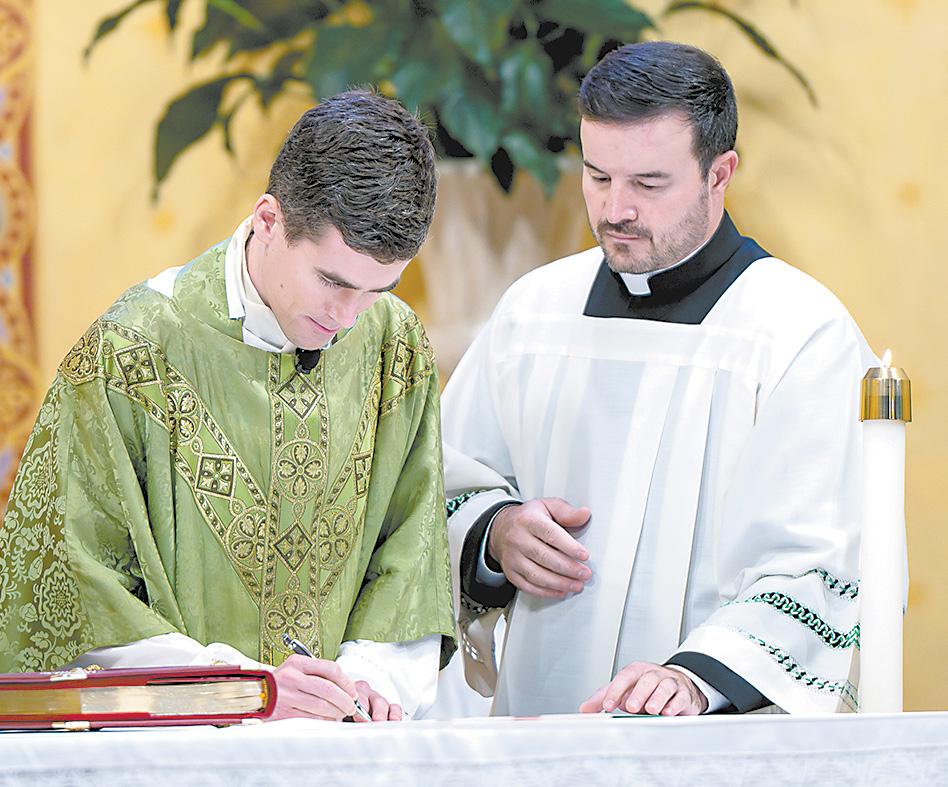
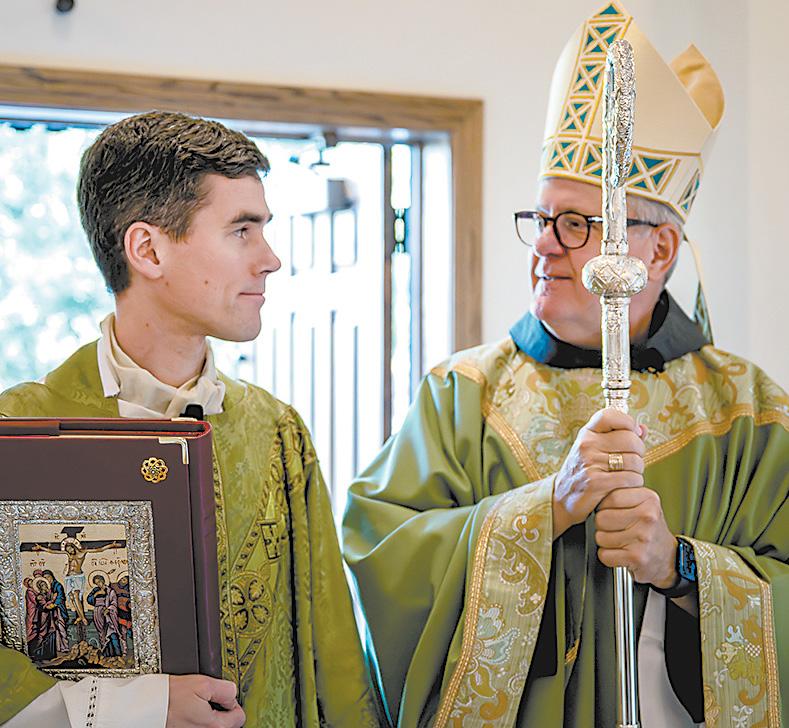
Dilworth area parish, which now numbers about 500 families. Founded in 1939, it was elevated to cathedral status when the Charlotte diocese was established in 1972.
“The parish has seen growth in the number of registered parishioners over the last year,” he said. “It also has a vibrant OCIA outreach – we’ve had 40 people contact the church to inquire about OCIA since last November. The community life of a parish is something that is always important to me.”
Parishioner and catechist Jake Cunnane said he already feels a connection with Father Ascik after attending a two-hour
workshop he led.
“I really like him,” Cunnane said. “He has a lot of ideas on how we are going to approach the families and our teachings going forward.”
“The amount of attention he is paying and applying in his ministry here is encouraging,” he said. “I am excited to get to know him and see the gifts he will bring to our community.”
Raised in the Asheville area in a family of nine children, Father Ascik was joined at the installation Mass by several family members.
“We feel very happy and blessed,” said his mother, Karen Ascik. “I still remember when he was just a candidate for the seminary, and we came to Mass here with Bishop (Peter) Jugis. It seems like such a long time ago. It is hard to imagine, but I know that God has a plan.”
After Mass, Father Ascik reiterated the bishop’s message that faith must be nurtured and shared, both within the parish and out in the wider community.
“We need one another in our journey of faith,” he said.
“No one believes alone. I look forward to collaborating with the parishioners of St. Patrick to find ways to support one another in our walk of faith.”
‘UNTO THESE HILLS’
LISA GERACI AND BRIAN SEGOVIA catholicnews@rcdoc.org
HIGH POINT — The Church’s 2025 Jubilee Year, themed “Pilgrims of Hope,” has inspired some Catholics to travel to pilgrimage sites around the globe while others have embarked on adventures closer to home.
Immaculate Heart of Mary Church in High Point sent pilgrims to Italy earlier this year, then embarked on a second trip, this time to the N.C. Mountains – a pilgrimage that particularly appealed to Hispanic parishioners.
“We have such a large Hispanic community, and they’re so good and faithful and full of love for the Lord,” says Father Patrick O’Connor, pastor of Immaculate Heart. “But many are fearful of traveling right now, so I thought, ‘Let’s plan something local because they deserve it.’”
The resulting three-day trek began with a 3-hour bus ride from High Point to Asheville where one of only three official Jubilee year pilgrimage sites in the Diocese of Charlotte exists: St. Lawrence Basilica. On Day 2, they journeyed to Our Lady of Guadalupe Mission Church in the Cherokee Indian Reservation, and ended at St. Joseph Church in Bryson City.
It was a deeply faith-filled experience that brought the growing community together in unanticipated ways.
“I came here two years ago; there were 50 to 100 Spanishspeaking people,” says Father O’Connor. “Now we have about 750. A lot of people don’t know each other, so this was a great community builder.”
The 55 pilgrims packed running shoes and extra Colombian coffee to keep up with Father O’Connor. They experienced moments of spiritual connection at holy sites as well as the natural beauty of God’s creation through rivers, waterfalls and mountain peaks, all while building community through faith, fellowship and fun.
Pilgrims young and old, from Mexico, the Dominican Republic, El Salvador and Colombia hopped off the tour bus on the morning of the Feast of the Assumption, Aug. 15, at their first stop, the basilica.
The Spanish Renaissance architecture reminded some of childhood parishes, with tall stained-glass windows, a dome roof, arched doorways and custom brickwork. They learned the architect was Spaniard Rafael Guastavino from basilica tour guide/music director Andrew Davis.
They also had a more
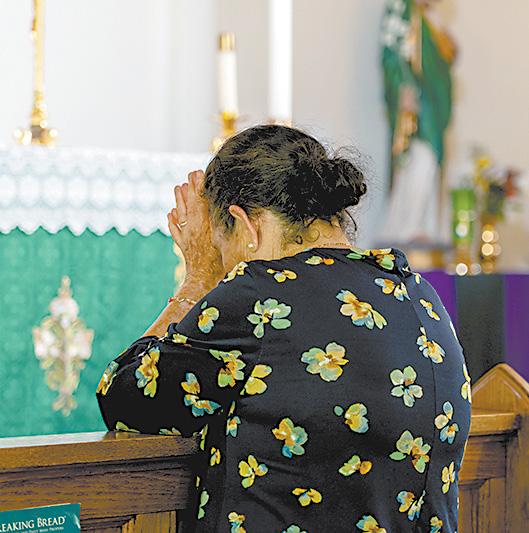
immediate connection:
Immaculate Heart of Mary had paired with St. Lawrence in the diocese’s Sister Parish Program to help in their recovery from Tropical Storm Helene.
Ears perked up when Davis discussed the storm damage. The basement flooded. The basilica had no water for 10 days, he said.
“Your donations really helped us during a time when many parishioners couldn’t make it to Mass,” Davis told them.
After Mass and breaking bread at downtown Asheville eateries, the pilgrims loaded back on buses to head for Cherokee.
Father O’Connor promised a relaxing float down the calm Oconaluftee River, with the pleasant backdrop of the Great Smoky Mountains. Despite the clap of thunder in the distance, the pilgrims grabbed their tubes and followed their shepherd.
The float didn’t go exactly as planned, as swift water made rapids tricky to navigate. Tubes flipped, pilgrims got stuck on rock formations, one float popped, then came a torrential downpour. And when everyone arrived back at the buses, hilarity and a sense of relief filled the air.
On the bus ride back to the Smoky Mountain Inn, pilgrim Kayla Fernandez credited the group for working together to overcome obstacles.
“If it wasn’t for teamwork,” she chuckled, “I don’t know if we all would have made it down the river.”
That night, the pilgrims somberly watched the plight of the Cherokee Indians in “Unto These Hills,” an outdoor theater production that has been running for 75 years.
“You couldn’t miss the correlation between what the Hispanic community is experiencing with deportations and arrests and what the Cherokee population went through during the Trail of Tears,” Father O’Connor says.
On their second day, a renewed sense of excitement swept


the group as they journeyed deeper into the Nantahala River Gorge, departing Bryson City at dawn aboard the Great Smoky Mountains Railroad. Instead
AND LISA M. GERACI | CATHOLIC
(From top) At each stop, the pilgrims took time to pray. Visiting St. Lawrence Basilica reminded many pilgrims of the churches in their homelands. They were not surprised to learn the church was designed by a Spanish architect. The pilgrim’s final stop was the Our Lady of Guadalupe Mission, where they attended a Spanish-language Mass and mingled with Hispanic parishioners
of splitting up for different excursions as planned, the group chose to stay together.
“Everyone decided it was worth it to continue the bond they had created,” says Father O’Connor. “They all even chipped in [to pay fares] to make sure that everyone could join.”
For 4½ hours, the steam locomotive followed the Nantahala River and traced the curve of Fontana Lake, offering breathtaking views of the gorge as they reflected on God’s creation.
Teresa Pérez described it as a bonding moment: “These are
people that I only ever knew in passing on Sundays before, but now, being able to spend time with them and chat about our children, for example, was wonderful.”
Upon their return to Bryson City, they made their way to St. Joseph’s Mission Parish. Under the scorching sun, they greeted Father Victor Ameh and walked down the church’s sole aisle to sit in prayer. Surrounded by intimate wooden architecture and a simple altar, the group found more moments of quiet reflection.
Perched on a hillside above Cherokee, the pilgrims’ final stop was the Our Lady of Guadalupe Mission, where they attended a Spanish-language Mass and mingled with its Hispanic parishioners. Dedicated in 1966, it was the first Catholic church erected on the Cherokee Indian Reservation. It was built on property donated by a Catholic convert and approved by the tribal council and chief.
The church’s unique sevensided design was modeled on a Cherokee council house and features mosaic floor tiles that represent the tribe’s seven clans in a blending of Roman Catholic and Native American traditions. A massive stained-glass window depicting Our Lady of Guadalupe crowns the structure, symbolizing the spiritual unity of the journey.
“People, largely Mexican, were so excited by that magnificent stainedglass window of Our Lady of Guadalupe,” says Father O’Connor, “and they were very touched with the image of San Juan Diego, but instead of being Aztec, he was portrayed as a Cherokee native. I think they really felt a kinship with the Cherokee natives.”
Jose Andrade was filled with joy by the pilgrimage experience, calling it an “escape” from daily challenges and anxiety some in the community feel.
“This helps us relax a bit,” he said. “This allows us to get out of our routines. It helps us a lot, thanks to the efforts of Father O’Connor.”
Upon returning home, Father O’Connor reflected: “Whatever experiences you have during the pilgrimage, whether they’re spiritual highs or moments of struggle, you remember that God is there and you are walking with Him. You’re not alone, and you’re doing it together.”
He was just about to delete the group chat containing pictures and messages from the weekend but stopped when he got a message: “Don’t erase this, please, because we want to be able to talk to all of you forever and not let this end.”
— Parishioners of St. Matthew Church embrace Jesus’ call to serve the poor, sick and hungry through a dozen ministries targeting food insecurity here and around the world. From daily trips to collect donated food from grocery stores, to delivering hot meals in atrisk neighborhoods, to its massive Monsignor McSweeney World Hunger Drive, thousands of volunteers live out the words of the Gospel of Matthew

by providing countless tons of food to people living on the margins. “We believe Jesus’ words that any act of kindness we do for the least of our brothers and sisters is an act we do unto Him,” says Antoinette Usher, St. Matthew’s chief operating officer. “We truly want to be the hands and feet of Jesus – and we always try to get our children involved so we are not just serving others today but are teaching the next generation to carry that on.”
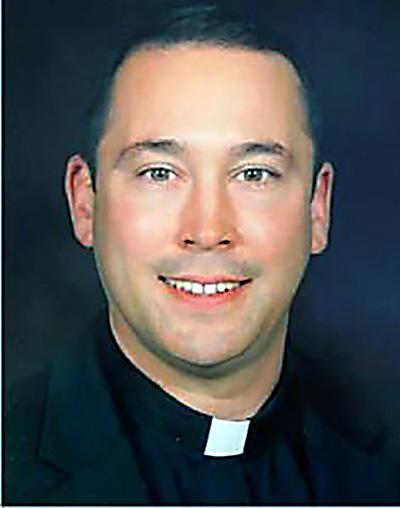
“It really is astounding and heartwarming to see how seriously the people of St. Matthew respond to God’s call to help others. As one of the biggest parishes in the country, everything here seems magnified – and that means we can have a powerful impact in our mission to feed the hungry.”
More than 1,500 volunteers –including Bishop Michael Martin –put on hair nets and rolled up their sleeves Aug. 16 to pack food for the 23rd annual Monsignor McSweeney World Hunger Drive at St. Matthew Church.
The atmosphere at one of the nation’s largest Catholic parishes, which has 11,000 families, was jumping, with a DJ cranking up “Take Me Home, Country Roads” and more favorites as people sang while packing meals that will feed
people locally and around the world.
“It’s so moving to see families working together,” said parishioner and co-ministry lead Steve Favory. “Grandparents and children with so much energy and excitement, taking time out of their busy schedules to help feed the poorest of the poor.”
Throughout the day, the crowd felt like a small community, which was exactly what the drive’s founding pastor, Monsignor John McSweeney, envisioned back in 2002.
“St. Matthew is a big operation,” said parishioner Colleen Shevsky. “That was Monsignor McSweeney’s
thing – he wanted this massive church to feel like a small chapel.”
Over the past month, the community came together to raise $431,000. Funds are used for food, education and sustainability projects in impoverished countries. Locally, the campaign is addressing increased food insecurity by supporting food banks and providing financial support to western North Carolina, as it continues to recover from Tropical Storm Helene.
HUNGER, SEE PAGE 17


Additional food ministries
St. Matthew Parish offers a range of food ministries to serve those in need. For more information, go to www.stmatthewcatholic.org/ feed.
n Serve Charlotte’s Homeless: This ministry prepares and serves hot meals to the Charlotte Homeless Resource Center on the fourth and fifth Thursday of every month.
n Meal Bags to Go: Volunteers prepare and donate 400 bagged breakfasts and lunches each month for the Community Shelter of Union County.
n Francis Feast of Union County: Volunteers prepare and serve hot meals on the first Sunday
of each month for the Community Shelter of Union County.
n Friendship Trays: In partnership with Meals on Wheels, volunteers drive meals to the homes of elderly individuals. Each volunteer commits to a one-hour route once a month.
n Muffin Ministry: Parishioners each bake 24 fresh muffins for delivery to three homeless shelters.
n Missionaries of the Poor and MOP Garden Ministry: Volunteers prepare and serve a monthly meal at the Missionaries of the Poor
in Monroe and assist with their garden.
It’s 7 a.m. on Saturday and St. Matthew volunteers are already cooking hot meals they’ll package and deliver to one of Charlotte’s most economically challenged neighborhoods before lunchtime.
“We have served the Farm Pond community for over 18 years,” ministry leader Marianne Raispis says of the east Charlotte neighborhood. “We go where the need exists.”
Lead cook Gale Allocco runs the kitchen at St. Matthew, warming up food received from donors throughout the week and instructing new volunteers on how to assemble a food tray.
“Each box gets two proteins, two carbs and a veggie,” she says.
Throughout the week, volunteers pick up food from Trader Joe’s, Chick-fil-A and Whole Foods, and some parishioners bring in hot meals they toiled over throughout the week in their own kitchens.
Everything moves quickly. Trays are assembled, dishes are washed, meals are boxed in Styrofoam and then bagged – if the room had a tempo, it would be allegro.
Working in an adjacent room, other volunteers are also hustling – packaging hundreds of bags of food for nursing home residents living in the Farm Pond community.

Around 9:30 a.m., after prayer, everyone races to their vehicles and falls in line behind the gray-and-white box truck with “Mel’s Diner” emblazoned in orange on the side.
AThe drive from St. Matthew in Ballantyne to Farm Pond off Albemarle Road takes 30 minutes, the affluent suburban landscape slowly melting into aging apartment buildings.
Despite its rusty exterior, broken speedometer and finicky right turn signal, the Mel’s Diner food truck brings smiles to people waiting in the greenspace of the Farm Pond area.
Standing in line are 58 people from around the world, hailing from Burma, Ukraine, Latin America, India, Syria, the Middle East – and from right here in the neighborhood.
Residents express their gratitude with hugs, smiles and waves. Few words are exchanged, but the language of love is clear.
Most head home with as much as they can carry – cardboard boxes and bags filled to the brim with necessities. Even the children carry a heavy load, not leaving any precious cargo on the table, grabbing anything they can.
“The people you meet are grateful, but they are fighting for themselves. They have grown up in poverty and need food,” says Toni Springman, who volunteers almost daily. “You give with grace without expecting in return.”
s the sun rises, one of St. Matthew’s best-kept secrets begins to unfold.
With 104 volunteers working seven days a week, Our Daily Bread ministry gathers day-old bread and bakery items from 11 large retailers – including Costco, Harris Teeter, Publix and Amélie’s – then delivers the food to 56 local churches and organizations.
Co-led by retired FBI agent Rick Shaffer, Our Daily Bread provides more than 300 tons of food annually to people in need.
“They fly so under the radar, I am in awe of all the different people they help,” says Rossanna Alvarez, St. Matthew’s volunteer coordinator.
Shaffer says the ministry would welcome more help and praised the dedication of his volunteers.
On Thursdays, volunteer Kevin Ryan begins his day two hours before he goes to work.
“I don’t mind waking up a little early for this ministry, it helps so many,” says Ryan. “The early morning drive
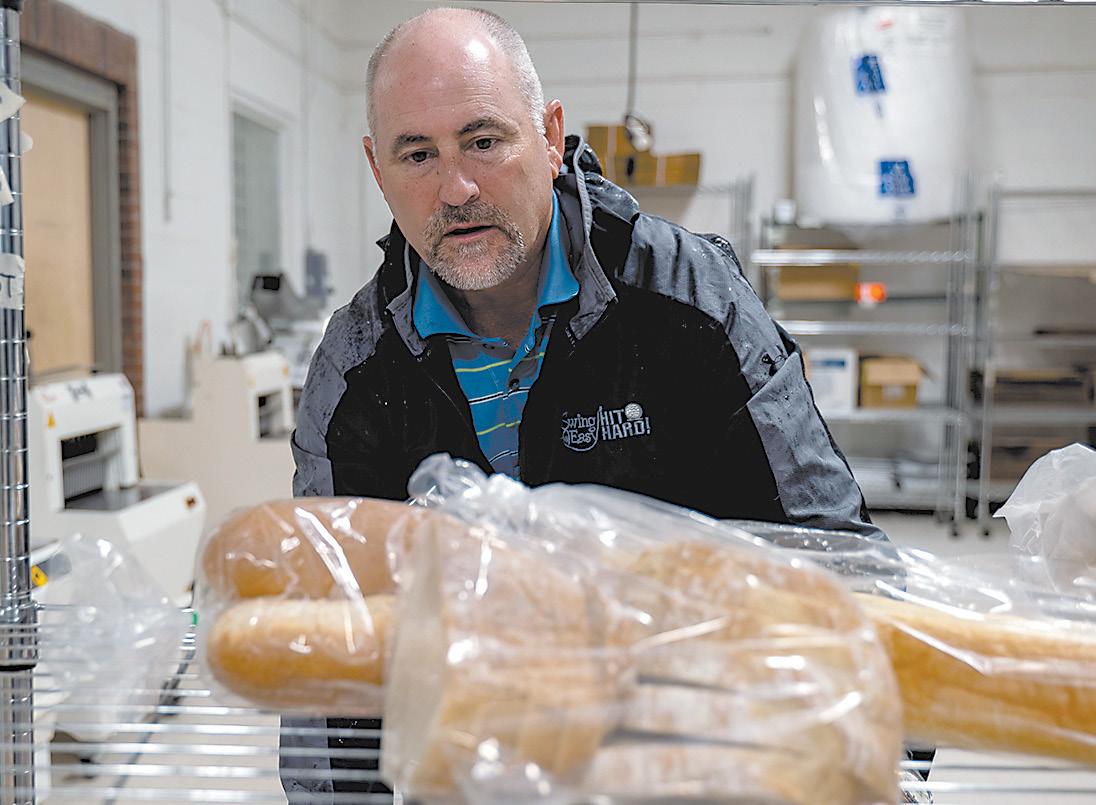
allows me to reflect on God’s love and spend time with Him before facing a hectic day.”
By 6:45 a.m., he is waiting at the loading-dock door behind Publix in Cotswold. Sometimes, they’ll roll out a shopping cart overflowing with artisan breads, cupcakes and pies, while other times, there may just be a couple of fruit tarts. Everything helps.
After loading his car, Ryan is off to Amélie’s on Central Avenue, where the bakers leave a bread rack filled with assorted items for him to grab.
At 7:30 a.m., he arrives at Plaza Baptist Church. Though it’s too early to see the hundreds of hands his food will reach, he is greeted with joy by the Plaza Pantry coordinator, whose team sorts everything into bags for local neighbors in need.
At his last stop, Eastway Regional Recreation Center, he helps unload his items onto folding tables where they will later be incorporated into children’s hot meals.
“Our motto,” Shaffer says, “has always been that hunger knows no religion and has no denomination. Hungry is hungry, and we absolutely enjoy helping in this way.”
Mary’s Cupboard is bright with fresh flowers and shelves neatly lined with non-perishable foods you would find in any grocery store. There’s a single shopping cart and a checkout area.
This is not a mini-mart but a small room at St. Matthew Church. The clerk is St. Matthew volunteer Colleen Shevsky, and the shopper is a single mother in need.
The food here is donated by parishioners. Volunteers keep products organized, so when each shopper arrives for their individual appointment, everything is accessible.
“This has 100% transformed my life and my daughter’s life,” the shopper says. “I save on average around $400 a month coming here.”
Mary’s Cupboard meets with 40 to 50 referrals each month. They shop for as many groceries as they need and also receive a $25 Harris Teeter gift card for fruits, vegetables and other fresh food they don’t stock.
“Our referrals all come in different shapes and sizes and
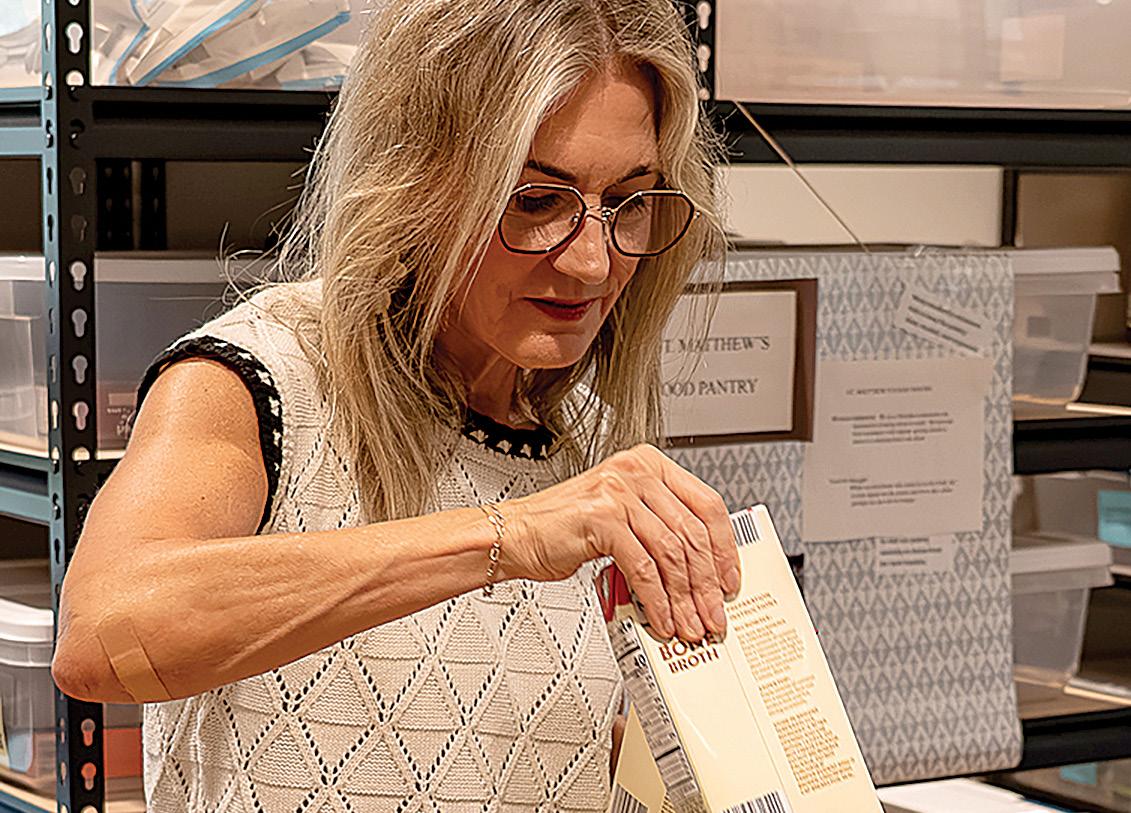
with different life challenges,” Shevsky said.
For the shopper, who recently battled cancer, it took courage to seek help. Until now, she had always been the helper, the provider, the church volunteer who served others. Her diagnosis turned a tight budget into a dire food insecurity.
“Everything hit all at the same time,” she says, “I was one of those that was very prideful, and it was a hard decision for me to make to come through the doors, but on the other side of it, Colleen just made it so easy.”
When she was particularly weak during treatment, the shopper says: “This lovely lady pushed my cart. This amazing human lifted the food off the shelves when I pointed to what I wanted.”
Today, the shopper is cancer-free and is considering joining the Church. She is still in recovery mode, but now she and Shevsky laugh like old friends who know how far things have come.
“I’ve sat here with her while she was destitute and encouraged her to keep going,” Shevsky says, “and it makes my heart happy to see how wonderful she’s doing.”
LISA GERACI lmgeraci@rcdoc.org
WINSTON-SALEM — Father Melchesideck Yumo smiled as he read a postcard from a recent visitor describing St. Benedict the Moor as “quaint and beautiful,” well aware of the years of work that went into making that favorable first impression.
One of only four historically Black churches in the diocese, the 84-year-old structure has been transformed with fresh paint, speckled blue carpet and stark-white altar linens that now make its wooden crucifix pop. New lights in the sanctuary glow and refinished pews still carry the slight smell of shellac.
The four-year, $150,000 “glow-up” is the result of people and parishes coming together from across the diocese to care for one another. Parishioners and clergy of St. Benedict have worked elbow-to-elbow with volunteers from Holy Family and St. Leo the Great parishes, both in the Triad, and St. Mark in Huntersville to restore the building serving some 400 members.
“The Church is the Body of Christ. Even if we are living in different towns, we remain one,” said Father Yumo, administrator of St. Benedict. “This church stands as a testament to what we can do together.”
The project brought together people of different races, languages, income levels and cultural backgrounds. Yet, through service and working together, they have nurtured a sense of unity and collegiality.
“Because of this collaboration and our focus on unity, there has been a lot of harmony these past few years,” Father Yumo said.
St. Benedict the Moor, established to serve Black Catholics in 1940, was placed under the direction of the Franciscans, who ministered at the parish until 1966. Since then, the parish has been staffed by Jesuit priests, diocesan clergy and, most recently, priests from Cameroon –including Father Yumo.
Generational and demographic changes have blessed the church with new Hispanic families, who now make up most of the congregation. And while the faith has continued to flourish, change has also brought challenges – especially in keeping up with the property.
In 2021, St. Benedict the Moor partnered with parishes across town, Holy Family and St. Leo the Great, who recognized the needs – and historic significance – of their sister parish.
Holy Family Deacon John Harrison remembers visiting the church in during the pandemic: “It was 25 degrees outside, in the middle of January … and the parishioners were bundled up in their jackets,” he said. “The boiler in the basement broke, and the offices, the rectory and the church had no heat.”
People rallied, Deacon Harrison says, with all the parishes combining to raise over $150,000. “We need to help people in our Church, and when I say our Church, I mean our universal Church, the Church that goes beyond our four walls and helps other people.”
“I don’t care if you’re building a new church or just painting the back porch,” he said. “If you give people a good enough
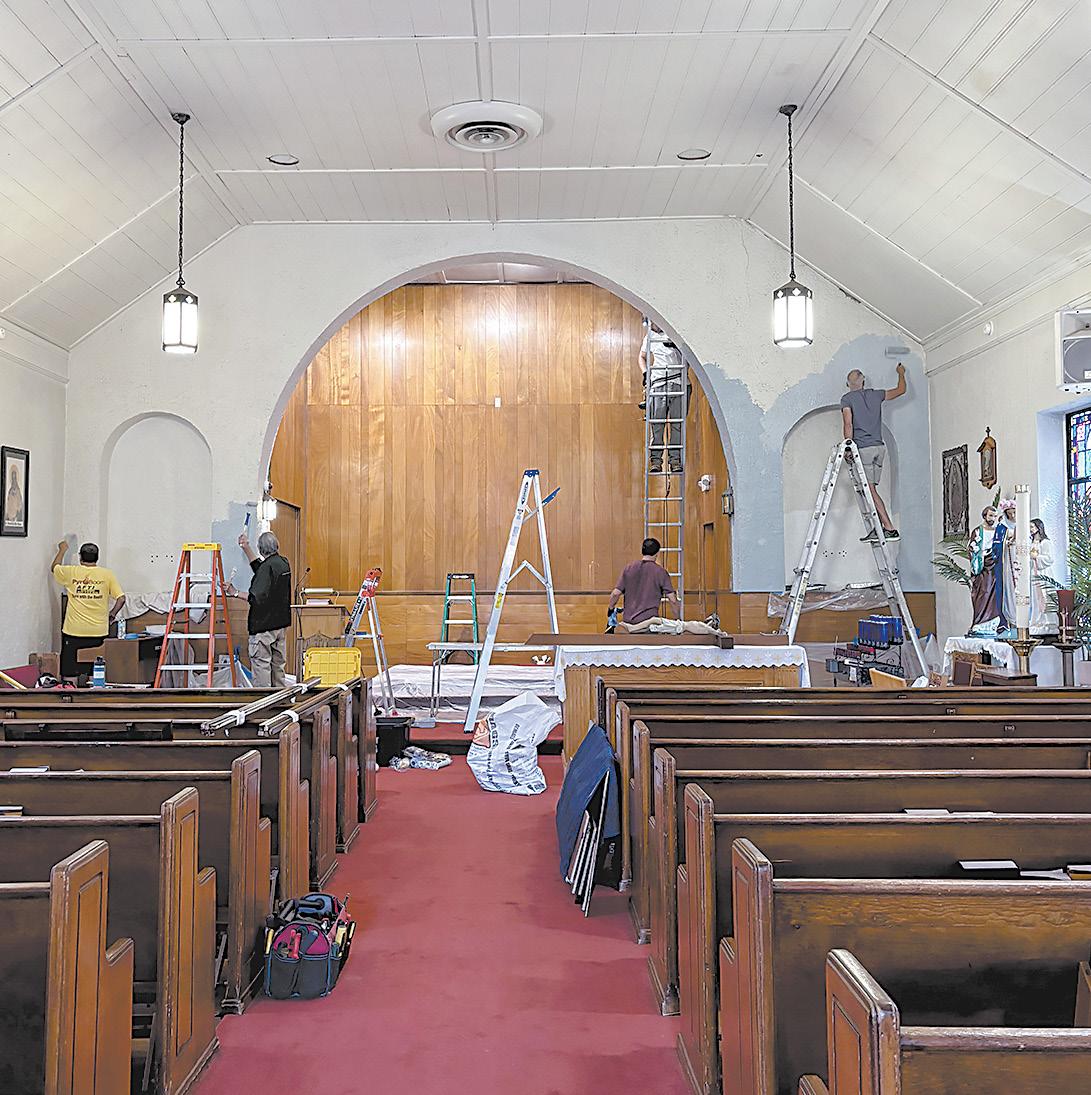
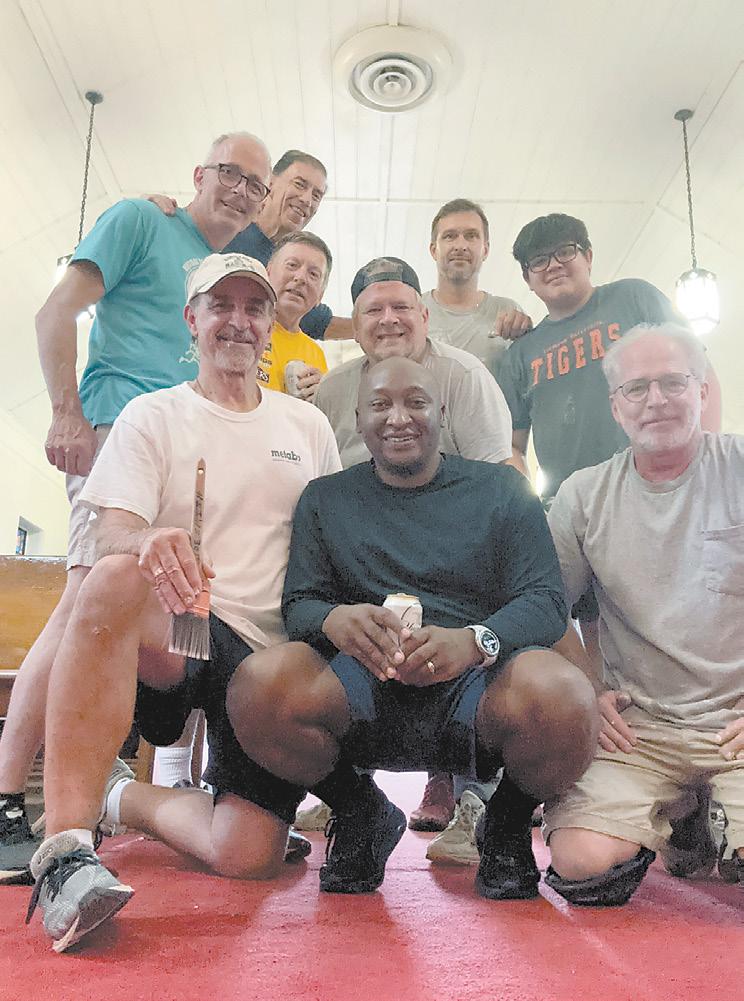
reason, they are going to come forward with the support.”
Deacon Harrison, who has an engineering background, took on the role of project manager. Soon, the boiler was replaced with three modern HVAC units. From 2021 to 2023, the collaboration resulted in a new hot water heater, a new roof on the education
‘If you give people a good enough reason, they are going to come forward.’
Deacon John Harrison
center and carport, lighting and electrical upgrades, a ramp to improve accessibility and remodeled bathrooms.
St. Benedict parishioners were on the front lines – tiling, hanging drywall and painting.
Good Shepherd Mission and later St. Mark also joined in work to restore St. Benedict.
“It is wonderful to see the Catholic churches in our diocese with their various segments coming together for a common cause to support such an important church,” said Jim Kelley, the diocese’s development director, who helped facilitate the partnership. “This model is something we should seek to replicate in our other churches to build relationships and deepen our communion in the Church.”
HANDYMEN AND THE HOLY SPIRIT
Father Yumo had connections at St. Mark, since he’d served as parochial vicar there for three years. So when he moved to St. Benedict, his friends came to visit. Some members of Mary’s Women of Joy, a
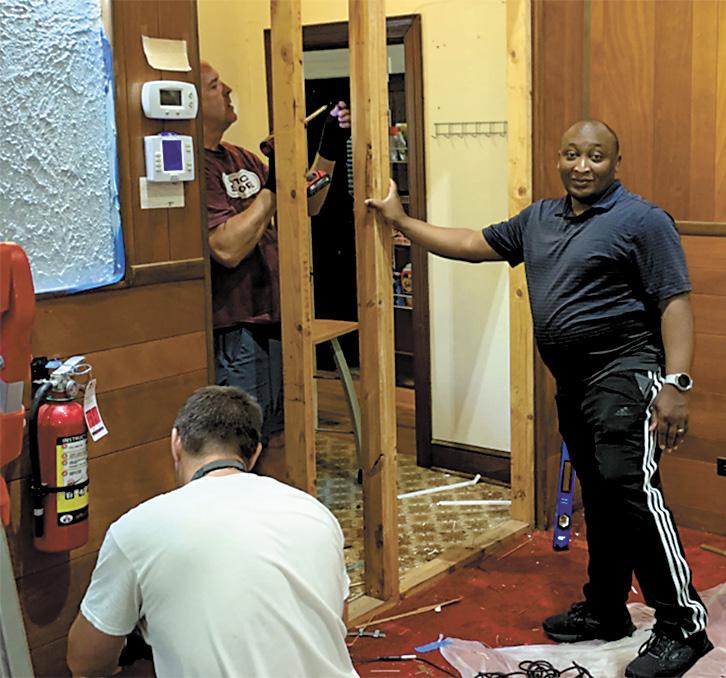
group of ladies at St. Mark, came along to clean the rectory, the church and the office area. Among the men who visited were St. Mark’s handyman crew of eight retirees, who quickly spotted ways they could help restore St. Benedict.
“We love to do odd projects that improve people’s homes and improve the Church,” says crew member Bob Langbo. “Stewardship – time, talent and treasure. That’s what this is about.”
Over the next two years, the men drove the 75-mile distance to help paint, assemble furniture, remove old radiators and put in ceiling fans. They installed new lights, purchased rugs, refinished the pantry and replaced kitchen fixtures.
“Whenever they come here,” Father Yumo says, “they provide the materials. … Sometimes they come to work for days.”
Ellen Goheen, an interior designer and St. Mark parishioner, began receiving FaceTime calls from the handymen seeking advice. She advised the crew to use cool shades of blue and warned against painting the sanctuary paneling – instead encouraging them to replicate the intricate crisscross trim design from the church’s wood-framed choir loft.
“The sweat equity in this place is pretty amazing,” Goheen says. “To be included in the St. Benedict the Moor community is pretty cool.”
The church today beckons with its freshly stained wooden crucifix highlighted by white painted trim, the new white altar linens and a white and aqua accent wall that makes the Mary and Joseph alcoves stand out.
The beauty inspires visitors “in a simple, quaint way,” she says.
The friendships built during the work also inspire. Some of the St. Mark crew now drive to Winston-Salem to attend Sunday Mass.
“We love coming up here. The parishioners come feed us, and we got to know them,” says Joe Smith from St. Mark. “They really embrace us, and they appreciate everything – and that motivates us even more.”
Father Yumo can’t wait for the parish’s 85th anniversary on Oct. 25. The celebration will bring together new friends and old in the beautified space.
“Their spirit of sacrifice” he said, “is a sign of the love that they not just have for me but for all of our brothers and sisters.”
CHARLOTTE
—
For one St. Matthew parishioner who walked the Camino last year, her journey truly began after the walk, and she is inviting others to join her in that experience.
“My own journey on the Camino ended outside the Cathedral of Santiago de Compostela, and yet, I learned, it is in that moment your Camino actually begins,” said Lennie Cox, a Divine Mercy team member.
“I walked with my sister-in-law and other pilgrims, each of us traversing rocky climbs, sunbaked plains and all that was held within our own hearts,” she explained. “Like the yellow arrows that guided our way, I found that these markers eventually gave way to a deeper call. I was called to carry what I learned into my life after the pilgrimage, and to walk forward as a person changed by the journey.”
The lessons of gratitude, community, perseverance and mercy etched into her heart are what she and others want to share during a spiritual pilgrimage morning Saturday, Oct. 4, at St. Matthew. The event is a living invitation to start, resume or deepen your Camino.
Father Patrick Cahill, St. Matthew’s pastor, will help attendees discover what it means to be “Pilgrims of Hope.”
“Father Cahill’s guidance and prayer open our time together and frame our steps, not as tourists, but as people on a sacred journey, to a sacred place, for a sacred purpose,” Cox said.
Attendees will discuss how to navigate
the pilgrimage of life by drawing on lessons from speakers who have walked the Camino.
“Their talks will be mirrored by insights from Divine Mercy speakers,” Cox said. “Divine Mercy is more than a devotion; it is how we are called to live our lives.”
Pilgrims will gather for Mass in the church, followed by a breakfast. They’ll hear reflections from pilgrims, guidance on how to live devotion to Divine Mercy, and have time to encounter Christ’s mercy through reflection and by praying the Chaplet of Divine Mercy.
“The morning will send us forth not just with memories, but with a renewed sense of hope for the path ahead,” she said.
The event is open to everyone – those seeking a deeper understanding, pursuing a fresh start or navigating their next step.
“Arrows are pointing the way, and your pilgrim shell is waiting for you,” Cox said.
“The shell is a powerful symbol of the pilgrim’s identity, and it is calling you to walk each day as a Pilgrim of Hope. Please accept this invitation and come walk with us.”
When: Saturday, Oct. 4
Program: 9 a.m. Mass, followed by a 9:30 a.m. Camino Pilgrim Breakfast, then 10 a.m.-1 p.m. Divine Mercy Seminar sponsored by the Cenacles of Divine Mercy
Where: St. Matthew Church, 8015 Ballantyne Commons Pkwy., Charlotte

FEATURING SPECIAL GUESTS
The St. Joseph College Seminary Quartet
Fr. Matthew Kauth, Violin
Fr. Brian Becker, Cello
Matthew Sie, Clarinet
Fr. Kolbe Murrey, Violin



Join a mission-driven team that’s shaping how the Diocese of Charlotte connects, informs and inspires –in one of the nation’s fastest-growing regions.
We’re seeking a bilingual Communications Assistant to provide essential editorial and administrative support for the award-winning Catholic News Herald and diocesan channels and produce content highlighting our parishes, schools and ministries. You’ll also assist with media outreach and help build relationships and audiences. Candidates should have at least 2 years’ experience as an editorial or office administrative assistant (or similar), an associate’s degree or higher, and fluency in written and spoken Spanish and English.
If you’re detail-oriented, organized and ready to use your skills to advance a mission of communication and evangelization, we’d like to hear from you!



HIGH POINT — The Vietnamese communities of Immaculate Heart of Mary and Christ the King came together for a special Mass Aug. 17 to celebrate Our Lady of La’Vang, the patroness of Vietnam.
Father Joseph Dinh, pastor of Christ the King, presided over the Mass that was offered in both English and Vietnamese. The Vietnamese choir of Christ the King coordinated the musical arrangement.
“This was the very first time I prayed in the Vietnamese language,” Father Patrick O’Connor, pastor of Immaculate Heart of Mary, said. “The Mass, the beautiful music, and the devotion and solemnity of the people in prayer made this one of our most powerful religious experiences this year.”

Are you a connector with a hear t for mission and a talent for stor ytelling? Catholic Charities Diocese of Charlotte is seeking a visionar y Exter nal Eng ag ement Director to g row relationships and expand suppor t for our work.
In this strategic role, you will eng ag e clerg y, parishioners, donors, volunteers, and community par tners to build awareness and increase res ources. You’ll lead exter nal communications, shape our public voice through media and branding, suppor t fundraising events, and cultivate cor porate sponsorships
Location: Char lotte, NC
Appl y Today
Visit www.ccdoc.or g/car eers for a full job description and application details.
Be part of a team that puts faith into action and brings hope to neighbors in need.

COURTNEY MCLAUGHLIN Catholicnews@rcdoc.org
CHARLOTTE — Students in seven Catholic schools across the diocese will receive a total of $68,000 in financial aid from the C. Philip Johnston-Aline W. Kaneer Scholarship Fund, paying all their tuition for the 2025-2026 academic year.
The fund was created by Johnston with $4 million from his estate after his death in 2017.
Johnston was born in Charlotte but lived all over the country before retiring in the Southeast. He attended Mount St. Mary’s University in Emmitsburg, Md., and earned a master’s degree from the University of North Carolina at Chapel Hill in 1958. He worked in the entertainment industry, but when acting work became scarce, he took a “temporary job” working for Conrad Hilton in a new credit card venture called Carte Blanche. He rose to success in the emerging industry and, after reaching the position of senior vice president at a large regional bank in St. Louis, he left to lead a nonprofit organization specializing in consumer credit counseling.
Students from all 20 Catholic schools in the Diocese of Charlotte are eligible for scholarship awards from the fund.
The Johnston Scholarship follows students throughout their time in schools in the Charlotte diocese.
The schools that students will attend this year are Our Lady of Assumption in Charlotte, Our Lady of Mercy and St. Leo schools in WinstonSalem, Sacred Heart School in Salisbury, Bishop McGuinness High School in Kernersville, Immaculata Catholic School in Hendersonville, and St. Mark in Huntersville.
The scholarship awarded to each student ranges from $5,437 to $16,546, depending on the tuition cost and need. Each student can continue receiving assistance through the scholarship fund every year for the length of their academic career as long as they remain eligible.
“I first met with Mr. Johnston back in 1989. He made his decision to put this (scholarship) gift in his estate back then,” said Jim Kelley, diocesan director of development. “He never wavered from that commitment, even though he moved away from the diocese in his later years.”
Kelley noted, “More and more people across the diocese like Philip Johnston are recognizing a range of needs in the Church here in western North Carolina – including our Catholic schools, parishes, seminarian education, Catholic Charities and St. Joseph College Seminary – and remembering these ministries in their wills and estates.”
Since 1986, diocesan entities including parishes, schools and ministries have received 54 gifts of $1 million or more from individuals like Johnston. They typically help fund capital projects or endowments.

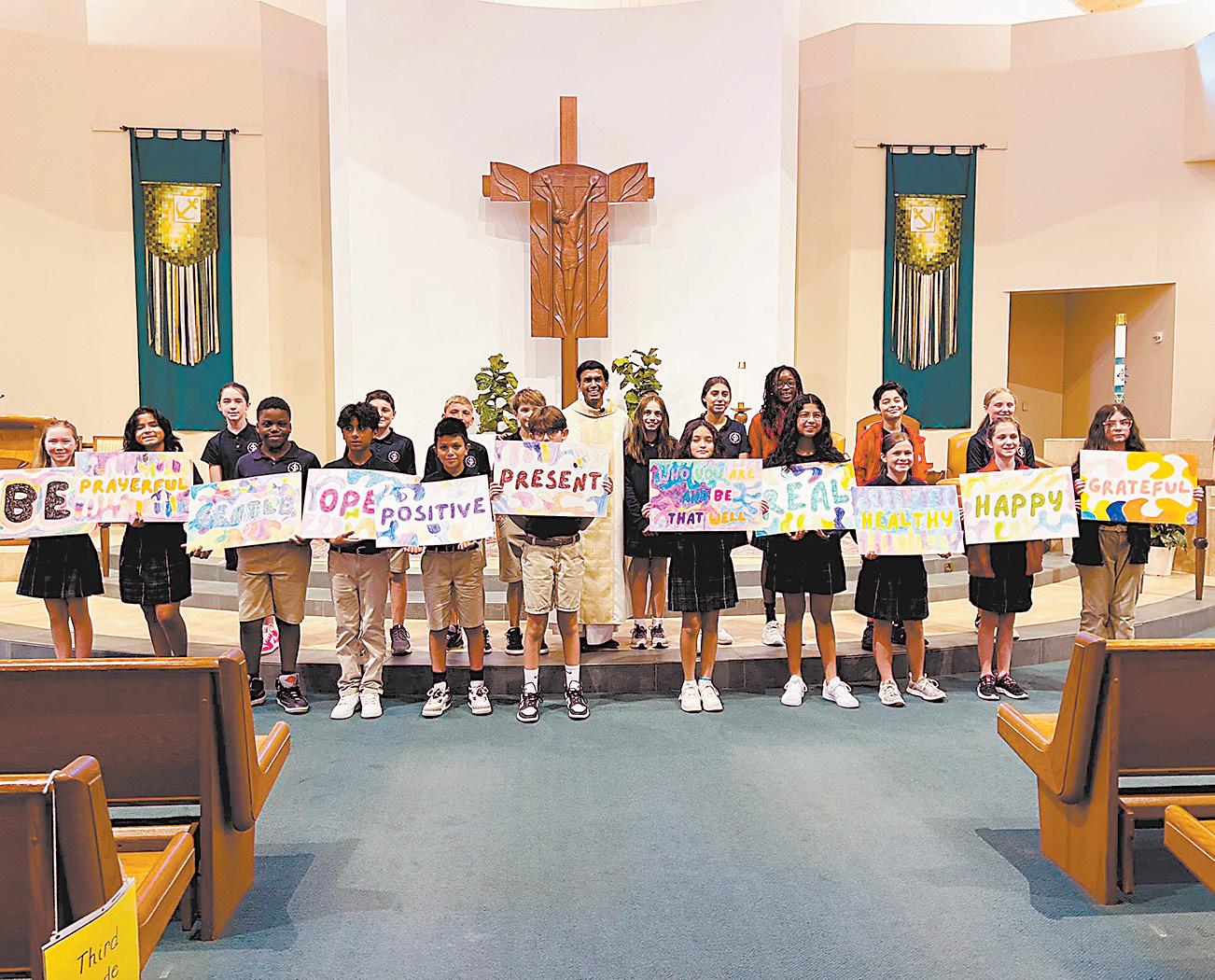
HIGH POINT — Students at Immaculate Heart of Mary School reflected on the words of St. Francis de Sales – “Be who you are and be that well” – during Mass on Aug. 27.
As they began their school year, the students remembered the Salesian Beatitudes: be prayerful, gentle, open, positive, present, real, healthy, happy and grateful.

school students across the Diocese of Charlotte returned to new digs and new educational opportunities, as schools launched a variety of new learning pathways and wrapped up more than $8.4 million in summer construction
and widespread refresh work. More than 8,300 students returned to schools from Asheville to Charlotte to Greensboro beginning the week of Aug. 18, with most of the diocese’s 20 schools at or near capacity following years of steady growth.



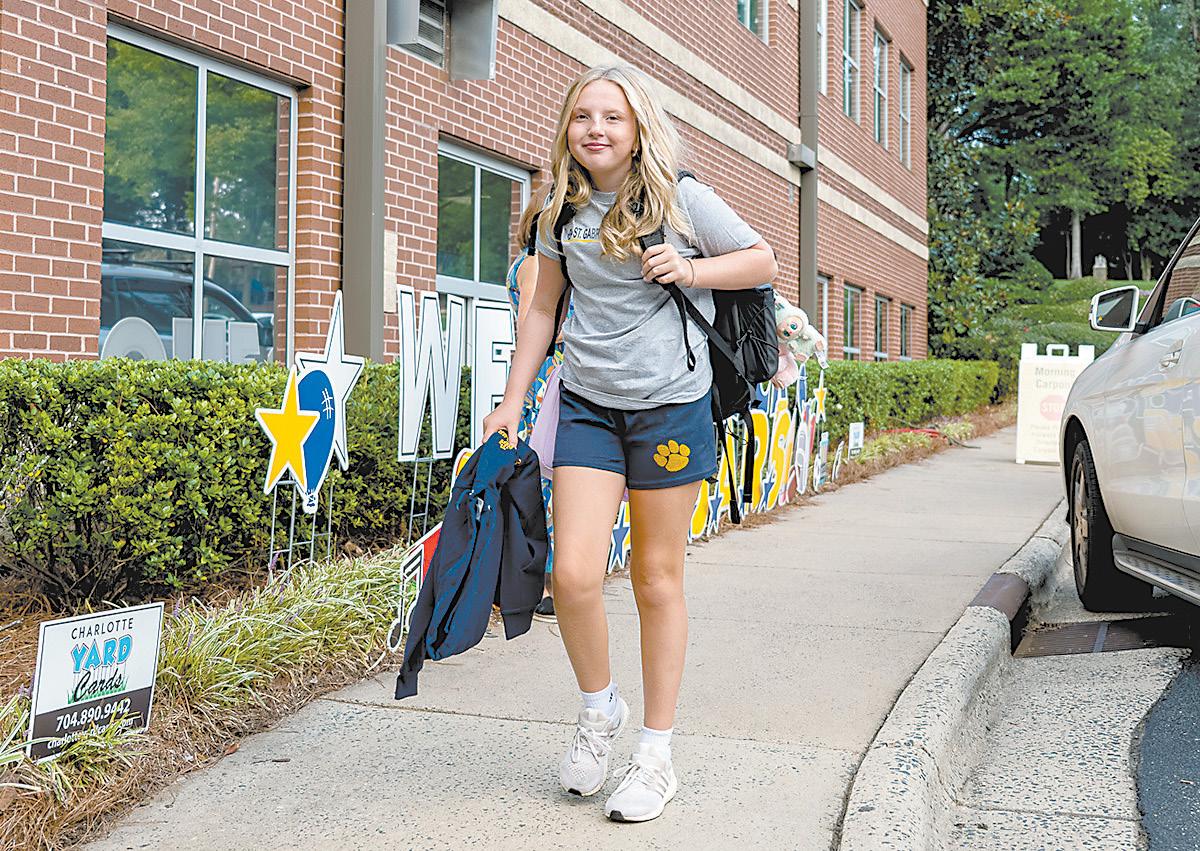




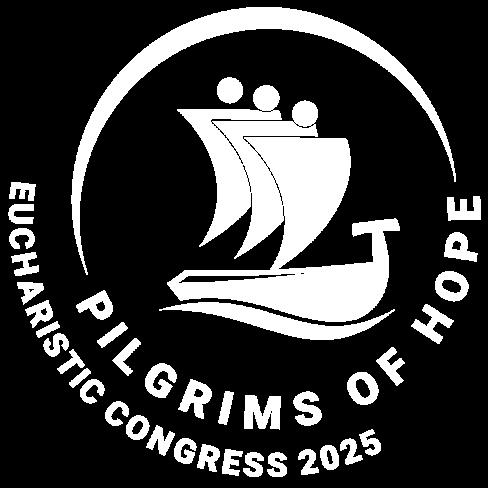
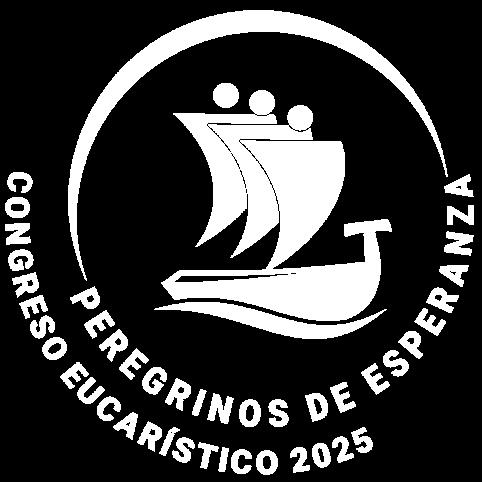

Eucharistic Procession / Procesión Eucarística
The Eucharistic Procession, in which Bishop Michael Martin carries a monstrance containing the Eucharist through Uptown Charlotte, is a highlight of the two-day Eucharistic Congress and one of the largest events of its kind in the U.S. It will start at 9 a.m. Saturday, Sept. 6, outside St. Peter Church at 507 S. Tryon St., and end inside the Charlotte Convention Center. Line up anywhere along the red procession route by 8:30 a.m. to join in behind your parish’s banner as it passes by.
La Procesión Eucarística, en la que el Obispo Michael Martin lleva una custodia con la Eucaristía a través del centro de Charlotte, es uno de los puntos destacados del Congreso Eucarístico de dos días y uno de los eventos más grandes de su tipo en los EE. UU. Comenzará a las 9 a.m. del sábado 6 de septiembre, frente a la Iglesia de San Pedro, ubicada en 507 S. Tryon St., y terminará dentro del Centro de Convenciones de Charlotte. Colócate en cualquier punto a lo largo de la ruta de la procesión antes de las 8:30 a.m.

NOTE: Not able to take part in the outdoor procession? No problem – just go directly to Exhibit Hall A-B inside the convention center.
Holy Hour /
a.m. Saturday, Sept. 6
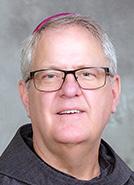
STAGING AREA • Banners
Knights of Columbus
Sodalities
First Communicants








The Holy Hour will begin at 10:45 a.m. on Saturday, Sept. 6. The homily on the Gospel of Luke (9:11b17) – the Miracle of the Loaves and Fishes – will be given by Bishop Martin.
La Hora Santa comenzará a las 10:45 a.m. el sábado 6 de septiembre. La homilía sobre el Evangelio de San Lucas (9,11b-17) – el Milagro de los Panes y los Peces – será predicada por el obispo Martin.
The Vigil Project will lead music during the Holy Hour and Mass on Saturday, Sept. 6. The group’s mission is to expand the conversation around Catholic music to extend beyond the liturgy into the day-to-day life of faith. Their latest release is “True Presence,” a full-length album focusing on the Presence of Christ in the Eucharist.

Join Bishop Martin and priests of the Diocese of Charlotte for Mass at the end of the Eucharistic Congress, starting at 5:30 p.m. Saturday, Sept. 6, inside the Charlotte Convention Center. (This vigil Mass fulfills your Sunday obligation.) Bishop Martin will give the homily. Únase al Obispo Michael Martin para la celebración de la Santa Misa al concluir el Congreso Eucarístico, a partir de las 5:30 p.m. del sábado 6 de septiembre, dentro del Centro de Convenciones de Charlotte. (Esta Misa de vigilia cumple con su obligación dominical.) El Obispo Martin dará la homilía.
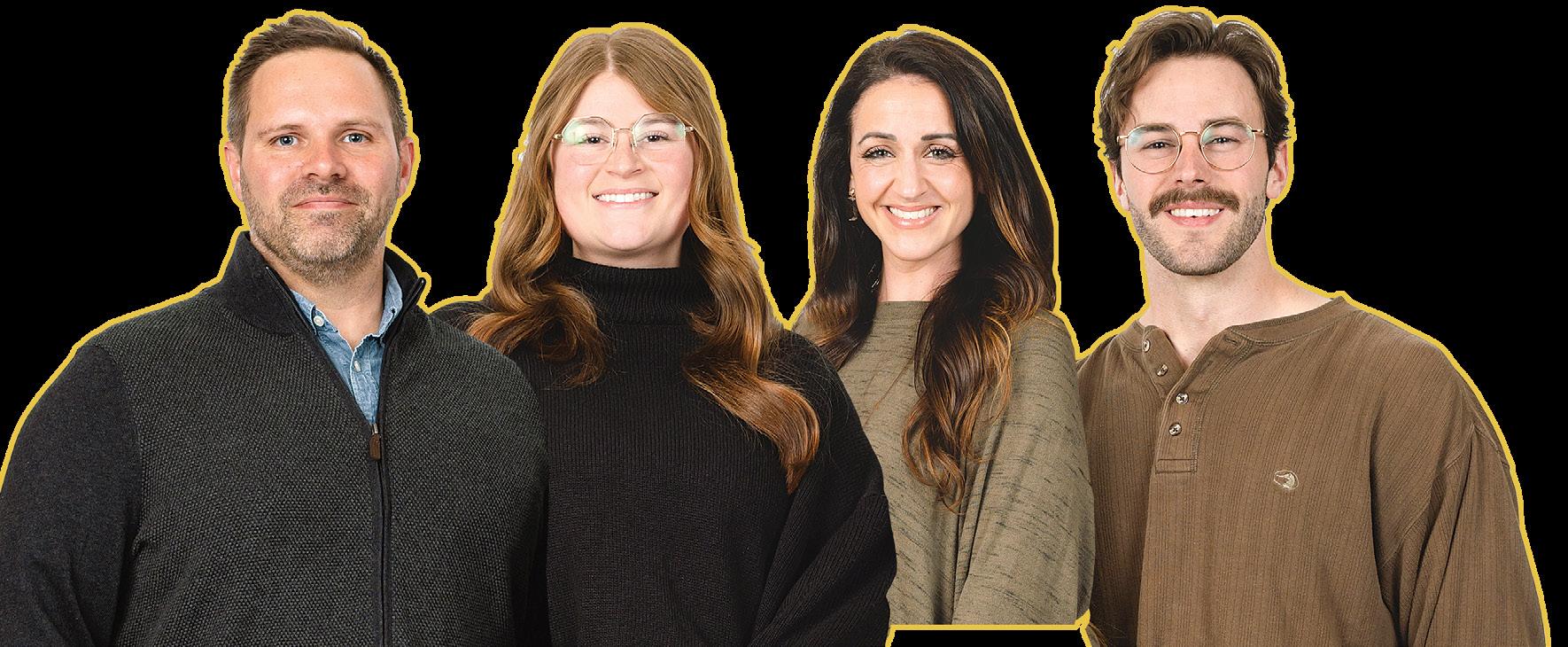





sale, including beer and wine. 100+ exhibitors also open.
Friday, Sept. 5
Eucharistic Congress kicks off with a welcome message from Michael Martin, OFM Conv.
Roadmap to Reality’
9 p.m. Friday, Sept. 5
free screening of the new documentary “Carlo Acutis: Roadmap moving look at the young “Millennial Saint.”

7 p.m. Friday, Sept. 5
Get ready for an unforgettable night of praise and worship – culminating with Eucharistic Adoration – led by singer/ songwriter Matt Maher, one of the most influential voices in Christian music today.
NOTE: The opening concert is free, but seating is limited and first-come, first-served. Come early to secure your spot!

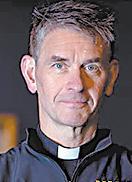
3-5 p.m. Saturday, Sept. 6
n 3 p.m. – Chris Stefanick
Through his nonprofit, Real Life Catholic, Chris Stefanick has reached millions with his dynamic seminars, bestselling books, and impactful video series – all designed to help people discover and embrace the lives they were made for in Jesus Christ and His Church. Hear his talk: “‘Two-Thirds of God’s Name is Go! How to Bring the Good News of the Eucharist to the World.”
n 4 p.m. – Fr. John Riccardo
Matt Maher is a nine-time Grammy nominee and three-time GMA Dove Award winner, with six No. 1 singles and over 600,000 albums sold. He has written hits including “Lord, I Need You,” “Because He Lives (Amen),” and “Your Grace Is Enough.” He has written for Crowder, Hillsong, Chris Tomlin and Casting Crowns, and released 10 studio albums, including the Grammy-nominated “Echoes.”


Most people have never been overwhelmed by the power of the Gospel, let alone surrendered their lives to Jesus. Yet there is no hope apart from Him, because no one else has done or can do what He has done. Don’t miss a powerful message of hope from Father John Riccardo, executive director of ACTS XXIX and nationally known radio host, author and speaker.

12:30-2:30 p.m.
Saturday, Sept. 6
Father Tri Truong, pastor of the Diocese of Charlotte’s largest Vietnamese congregation, will give a talk and hear confessions in Vietnamese.

12:30-3:30 p.m.
Saturday, Sept. 6
A special Saturday afternoon program just for middle and high school students (rising sixth-graders to 12th-graders) will feature guest speaker Chris Stefanick.
NOTE: All participants are required to check in Saturday between 8-11:30 a.m. on Concourse C inside the convention center. Pre-register online at GoEucharist.com to save time in line.
Find the full schedule of events, speaker profiles, Eucharistic procession instructions, FAQs and more.

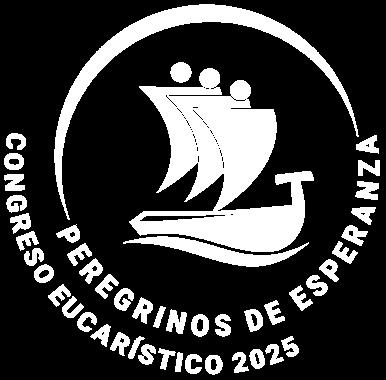
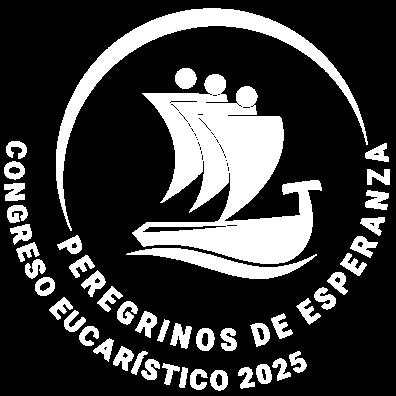
Ministerio de alabanza siervos de Dios 12-3 p.m. sábado 6 de septiembre

Los sonidos llenos de energía de Ministerio Abdiel SD –Siervo de Dios encenderán la programación en español del Congreso Eucarístico.


n 12:30 p.m. – Paula Umaña
Ven a escuchar el conmovedor testimonio de Paula Umaña, madre y extenista profesional que superó la parálisis gracias a su fe. ¡Su testimonio de vida te hará reír, llorar y creer en lo imposible! n 1:30 p.m. – P. Tito Serrano
Escucha el poderoso testimonio del padre franciscano Tito Serrano, quien comparte su camino de fe como hijo de dos culturas y su misión de evangelizar en las calles y redes sociales. ¡Una historia que inspira a seguir a Cristo sin miedo!
2 more screenings of “Carlo Acutis: Roadmap to Reality”: 2 proyecciones más de “Carlo Acutis: Roadmap to Reality”: n 1 p.m. English / Inglés n 3 p.m. Spanish / Español
AND DON’T MISS!
The Blessed Carlo Acutis Eucharistic Miracles exhibit will be showcased on Concourse C inside the convention center.
Encuentra el programa completo de eventos, perfiles de los ponentes, instrucciones para la procesión eucarística y más.



5 p.m.-closing Friday, Sept. 5
9 a.m.-5 p.m. Saturday, Sept. 6
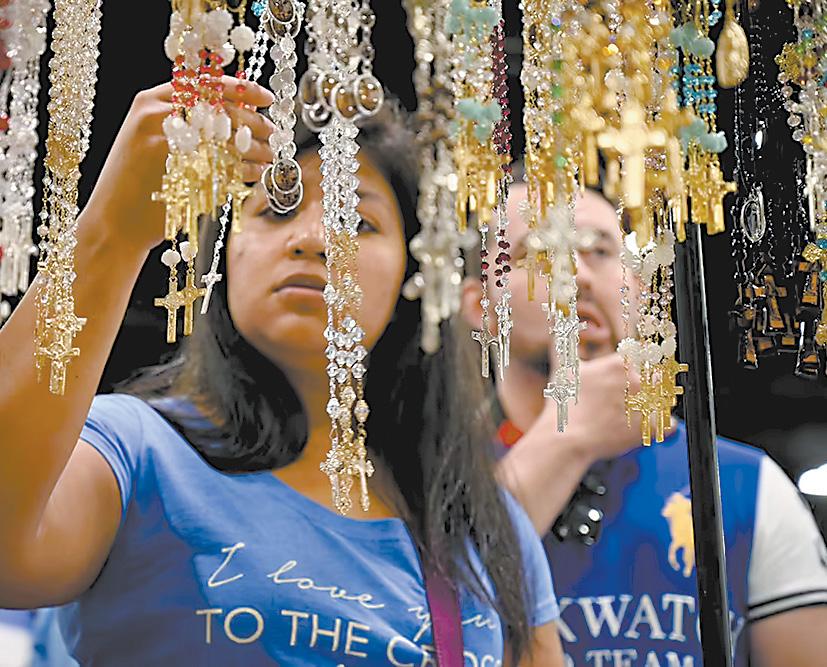
Visit us at the Eucharistic Congress - Booth #417



12 Gardens Sacramentals
Angelluz Religious Jewelry
Apóstoles de la Palabra
Ave Maria Catholic Store
Bethlehem Olive Wood
Blessbuyenterprise
Catholic Gifts
Christian Olive Art
Creator Blessed – Art Prints & Decals
Fiat Religious Store
Fount of Grace
Gifra Religious Gifts
Gifts of faith
GLORIOUS PRODUCTS LLC
GOT MARY? / GOT MERCY?
Hermanas Clarisas
Hilo Dorado & Historia de Fe Religious Art
Holy Heroes
Holy Land Art
Instrumentos del Señor
Ladybug Legend Rosaries
Midwest Theological Forum Catholic Publisher
Notre Dame Creations
Novena Cards
Our Saint Family
PRAY 4 HOLY SPIRIT
Prayer Pillowcases
Proud Catholic Company
Pure Faith and Love
Refuge Rosaries
Religion Jewelry
Ríos de Agua Viva
Romantic Catholic Tees
Rosa Gutierrez Spanish Books
Sagrada Paintings & More
Six Lilies Catholic Gifts
Sober-Now
Sophia Institute Press
St. Bernadette Gift Shop
TAN Books
The Little Flower
Totally Catholic Tees
UNIDAS POR AMOR
URPI Latinamerican Art

40 Days for Life Charlotte
Adopt-a-Seminarian
Birthright of Charlotte
Carolina Family Coalition
Carolina Traditional Liturgy Society
Charlotte Cursillo
EWTN
Luisa Piccarreta – Servant of God
MiraVia
North Carolina Right to Life, Inc.
Sisters of Mercy of the Americas
The Martyrs Walk & Catholic Men’s Conference of the Carolinas
Thomas Aquinas College
Youth Apostles
African American Affairs Ministry
Campus Ministry
Catholic Charities
Catholic News Herald
Catholic Schools Office
Family Life Office
Office of Vocations
Augustine Institute
Capuchin Franciscans
Claretian Missionaries
Franciscan Friars Conventual
Glenmary Home Missioners
St. Joseph College Seminary
Christian Tours / Burke International
Merrill Lynch Wealth Management
Totally Catholic Fundraising
Truthly App
Woodard Luxury Travel
Several Catholic groups will have info tables at the 2025 Eucharistic Congress – stop by to learn more!
• Catholic Daughters of the Americas
• Secular Franciscans
• Serra International
• Lay Dominicans
• Knights of Columbus
• Millions of Monicas
and more


BRIAN SEGOVIA BMSegovia@rcdoc.org
MOORESVILLE — Durante las mañanas, el restaurante Mamá Katie’s, en Mooresville, se llena de comensales ávidos por disfrutar de los desayunos caseros que prepara Katie Reyes. El local cierra a las 2:00 p.m., y el lugar queda sumido en la quietud por el resto del día. Sin embargo, una noche por semana, aquel restaurante tranquilo renace: las luces cálidas reemplazan la oscuridad, y las mesas dan paso a micrófonos, consolas y una atmósfera vibrante. Lo que es un refugio para el desayuno se convierte, durante unas horas, en un estudio de producción que une dos mundos diferentes bajo un mismo techo.
“Tratamos de no solo alimentar el cuerpo, sino también alimentar el espíritu con el amor de Dios”, dice la dueña, Katie Reyes.
Desde hace algunos meses, el restaurante, frecuentado por feligreses de la Iglesia Santa Teresa, ha sido lugar de producción de lo que ellos llaman “evangelización a través de las redes sociales”, mediante un programa de radio titulado Entre Fronteras. Es una emisión por Facebook en el canal DH Radio y en cuatro estaciones de radio en Huánuco, Perú, que establece una conexión familiar entre los feligreses de la Diócesis de Charlotte y Huánuco, utilizando oraciones, música, cantos e historias personales de fe. A través de la plataforma de comentarios durante la transmisión en Facebook, los feligreses en Perú comentan e interactúan con ellos. Reyes indica que, en los dos años que el restaurante ha estado en funcionamiento, contar con un estudio de radio en ese espacio normalmente dedicado a la alimentación ha sido algo completamente inesperado. “Para nada imaginé esto. Dios es misterioso y maravilloso”, comentó Reyes. “Es algo muy bonito y el Espíritu Santo obra de forma muy hermosa”. Reyes, quien ha estado profundamente involucrada en Santa Teresa como miembro del Ministerio Hispano y catequista, afirma que cada semana el programa ha ido creciendo. Y con ello también ha crecido una comunidad diversa que ahora escucha no solo desde Perú y Carolina del Norte. “Hemos visto personas sintonizar desde todas partes del mundo, y sigue creciendo”, añade Reyes.
ORÍGENES DE UNA CONEXIÓN PROVIDENCIAL

inspirando una colaboración más estrecha entre el Padre Lawlor y el Padre Navarro.
Ambos clérigos reconocen la providencia de Dios en aquel primer contacto fortuito con el obispo episcopal de Huánuco como algo primordial en esta relación de caridad. “Si él simplemente nos hubiera dicho en esa noche ‘Mucho gusto en conocerlo, padre. Que tenga buen viaje de retorno’, nada hubiera pasado”, afirma el Padre Lawlor.
Aunque la conexión por radio es algo relativamente reciente entre ambas diócesis, existe una historia de 19 años entre Charlotte y Huánuco, cuyo vínculo principal ha sido el Padre Huver Navarro, vicario de la parroquia Santa Teresa. Todo comenzó en 2006, cuando el Padre Mark Lawlor, ahora párroco de esa misma iglesia, viajó y estableció una conexión misionera con la Diócesis de Huánuco, a través de un contacto peruano que hizo mientras estudiaba ingeniería en la universidad. En Perú, el sacerdote forjó una amistad con el entonces obispo de Huánuco, Monseñor Jaime Rodríguez Salazar, quien lo invitó a hospedarse con él durante su viaje, estableciendo así una hermandad entre ambos territorios episcopales.
El Padre Huver Navarro, un joven sacerdote recién ordenado, fue el instrumento que Lawlor llama “providencial” para mantener esa fraternidad, cuando el obispo emérito Salazar lo envió a Charlotte como misionero. El mensajero de la fe de formación comboniana fue eventualmente designado vicario de la Iglesia Santa Teresa,

Con el tiempo, el actual obispo de Huánuco, Monseñor Pedro Bustamante López, ha mantenido el vínculo con Charlotte. Una de sus estrategias evangelizadoras ha sido expandir la presencia de su diócesis en redes sociales y medios de comunicación. Así nació la colaboración con DH Radio, la llamada “Voz de Huánuco”, que comparte cápsulas
de fe de miembros de la comunidad. “Gracias a esto, la evangelización presencial y virtual no ha parado; por eso DH Radio se escucha en todo el mundo”, afirma el Padre Navarro. Para 2025, ya son varios los programas en DH Radio que expresan la fe católica no solo en español, sino también en quechua. El 16 de julio, el programa Entre Fronteras emergió desde el comedor de ese pequeño restaurante en Mooresville y llegó al mundo entero a través de la plataforma peruana. Formado por la colaboración entre el Padre Huver Navarro, el Padre Mark Lawlor, Katie Reyes y varios feligreses del Ministerio Hispano, esta producción resalta la fe y la vida cotidiana de miembros en la diócesis de la “Ciudad Reina” en Carolina del Norte.
“Empezamos a escuchar los programas de Huánuco como grupo y nos dimos cuenta de que podíamos hacer algo con ellos”, comenta Reyes. “Aquí hemos trabajado en equipo para hacerlo realidad.”
La radio en Latinoamérica sigue siendo un medio muy popular, especialmente para la comunidad Católica. Según un estudio de Kantar IBOPE Media, el 75 % de los peruanos escuchan radio todos los días. Además, el Concilio Vaticano II reconoce que los medios de comunicación social “contribuyen eficazmente a descansar y cultivar el espíritu y a propagar y fortalecer el Reino de Dios”
UNA PRODUCCIÓN QUE UNE A LA COMUNIDAD DE FE
Cada jueves por la noche se ha convertido en un momento de canto, conversación y profunda emoción para los feligreses de Mooresville. Así fue el caso el 5 de agosto, cuando, desde DH Radio Huánuco, multitudes del Ministerio Hispano se conectaron desde el vibrante restaurante Mamá Katie’s para seguir una nueva edición del programa Entre Fronteras.
En un ambiente cargado de entusiasmo, los panelistas, el Padre Huver Navarro, Katie Reyes, el diácono Webster y varios invitados especiales, celebraron otro encuentro lleno de fe y comunidad. “¡Jatari, jatari, jatari! El tiempo pasa, pero la evangelización no se detiene”, exclamó el misionero Navarro en el aire, utilizando la palabra quechua jatari, que significa “levántate” o “despierta”.
Durante la transmisión, los oyentes no tardaron en responder: “¡Buenas noches, Padre Huver!”, saludaba uno, mientras otro proclamaba: “¡Verdaderamente ha resucitado!”.
Entre reflexiones y sonrisas, la guitarra comenzó a sonar con fuerza, marcando el ritmo de una noche en la que la fe cruzó fronteras y unió corazones a través de las ondas radiales.
Varios invitados compartieron su labor dentro de la parroquia: desde esfuerzos de donación, pasando por el ministerio de música, hasta el trabajo con jóvenes. Cada testimonio aportó una chispa de esperanza y compromiso a la comunidad.
Ahora, en ese pequeño restaurante de Mooresville, cada jueves por la noche, la fe se cocina y se sirve caliente para el mundo entero, uniendo corazones, culturas y comunidades en una sola mesa de esperanza.
“Esto es todavía muy nuevo para nosotros,” dice Reyes. “Pero es algo que nos inspira y ya cuando estamos al aire, el Espiritu es nuestro guía.”


LISA GERACI Y BRIAN SEGOVIA catholicnews@rcdoc.org
HIGH POINT — El Año Jubilar de la Iglesia en 2025, con el lema “Peregrinos de la Esperanza”, ha inspirado a algunos católicos a viajar a lugares de peregrinación alrededor del mundo, mientras que otros han emprendido aventuras más cerca de casa.
La parroquia Inmaculado Corazón de María en High Point envió peregrinos a Italia a principios de este año, y luego emprendió un segundo viaje, esta vez a las montañas de Carolina del Norte: una peregrinación que atrajo particularmente a los feligreses hispanos.
“Tenemos una comunidad hispana tan grande, y son tan buenos, fieles y llenos de amor por el Señor”, dice el padre Patrick O’Connor, párroco de Inmaculado Corazón.
“Pero muchos tienen temor de viajar en este momento, así que pensé: ‘Planifiquemos algo local porque se lo merecen.’”
La travesía de tres días comenzó con un viaje de autobús de 3 horas desde High Point a Asheville, donde se encuentra uno de los tres sitios oficiales de peregrinación del Año Jubilar en la Diócesis de Charlotte: la Basílica de San Lorenzo. En el segundo día viajaron a la Misión Nuestra Señora de Guadalupe en la Reserva India Cherokee, y terminaron en la parroquia San José en Bryson City.
Fue una experiencia profundamente espiritual que unió a la creciente comunidad de maneras inesperadas.
“Llegué aquí hace dos años; había de 50 a 100 personas de habla hispana”, comenta el padre O’Connor. “Ahora tenemos alrededor de 750. Muchos no se conocen entre sí, así que esto fue una gran oportunidad para crear comunidad.”
Los 55 peregrinos empacaron zapatos deportivos y café colombiano extra para poder seguirle el paso al padre O’Connor. Experimentaron momentos de conexión espiritual en lugares sagrados, así como la belleza natural de la creación de Dios a través de ríos, cascadas y cumbres montañosas, todo mientras construían comunidad con fe, fraternidad y diversión.
REFLEJANDO HISTORIA Y HOGAR
Peregrinos jóvenes y mayores, de México, República Dominicana, El Salvador y Colombia, bajaron del autobús la mañana de la fiesta de la Asunción, el 15 de agosto, en su primera parada: la basílica.
La arquitectura renacentista española recordó a algunos las parroquias de su infancia, con altos vitrales, una cúpula, arcos y ladrillos hechos a mano. Supieron por el guía Andrew Davis, también director de música de la basílica, que el arquitecto era el español Rafael Guastavino.

También había una conexión inmediata: Inmaculado Corazón de María se había hermanado con San Lorenzo en el Programa de Parroquias Hermanas de la diócesis para ayudar en su recuperación tras la tormenta tropical Helene.
Los oídos se agudizaron cuando Davis habló de los daños de la tormenta: el sótano se inundó, la basílica estuvo sin agua por 10 días. “Sus donaciones realmente nos ayudaron en un tiempo cuando muchos feligreses no podían asistir a misa”, les dijo Davis. Tras la misa y compartir el pan en restaurantes del centro de Asheville, los peregrinos subieron nuevamente a los autobuses rumbo a Cherokee.
El padre O’Connor les prometió un relajante descenso en flotadores por el río Oconaluftee, con el agradable telón de fondo de las Montañas Humeantes.
El recorrido no salió exactamente como estaba planeado: las aguas rápidas hicieron
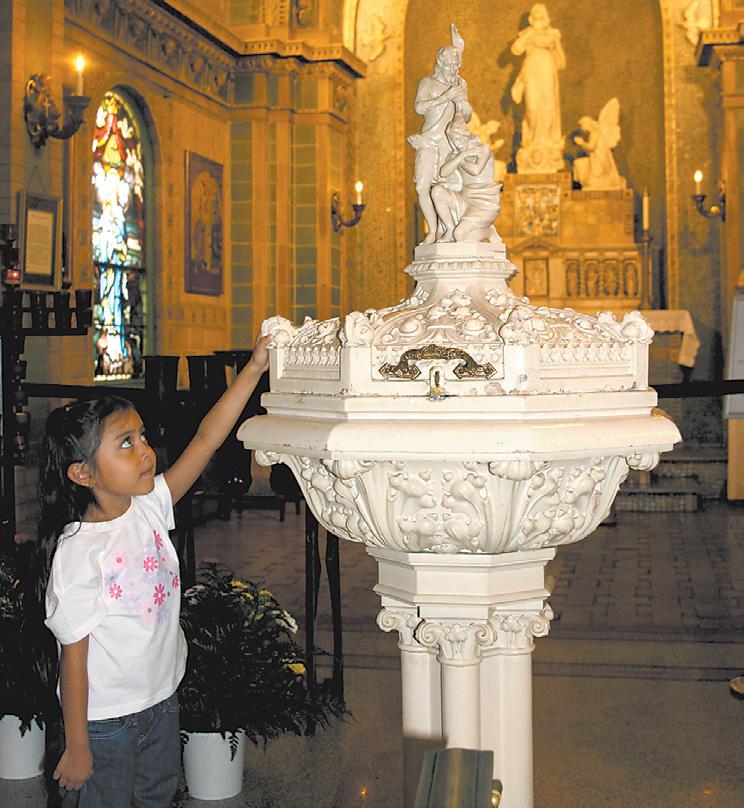
difícil navegar, algunos flotadores se voltearon, otros quedaron atrapados en rocas, uno se rompió, y luego llegó un aguacero torrencial. Cuando todos regresaron a los autobuses, el ambiente se llenó de risas y alivio.
Esa noche, los peregrinos observaron con solemnidad la difícil historia de los indios cherokee en la obra de teatro al aire libre “Unto These Hills”, que lleva 75 años en cartelera. “No se podía dejar de notar la relación entre lo que está viviendo la comunidad hispana con las deportaciones y arrestos, y lo que sufrió la población cherokee durante el Camino de Lágrimas”, reflexiona el padre O’Connor.
UN LAZO DURADERO
En su segundo día, un renovado entusiasmo invadió al grupo al entrar en el
PEREGRINACIÓN, PASA A LA PÁGINA 17
Considere unirse a los más de 2 millones de miembros de la organización fraternal católica más grande del mundo y registrándose en línea hoy en: www.kofc.org/joinus/es
Por tiempo limitado - Membresía en línea GRATISUse el código de promoción (BLESSEDMCGIVNEY)
SIMONE ORENDAIN OSV News
El obispo de Colorado Springs, Colorado, anunció a finales de julio que su oficina “estudiaría y discerniría” la “enorme tarea” de determinar si se abre una causa de canonización para un adolescente que murió tras abalanzarse sobre el tirador durante un tiroteo escolar hace seis años en las afueras de Denver.
Kendrick Castillo, de 18 años, fue el único estudiante que murió en el tiroteo de la escuela STEM School Highlands Ranch el 7 de mayo de 2019, en el que ocho estudiantes resultaron heridos. Gracias a su acción heroica, ningún otro estudiante perdió la vida en el tiroteo, según las autoridades locales.
Dos estudiantes, Alec McKinney, de 16 años, y Devon Erickson, de 18, fueron condenados por docenas de cargos por llevar a cabo el tiroteo y sentenciados a cadena perpetua.
Meses después de la muerte de Kendrick, los Caballeros de Colón le concedieron la membresía honoraria y otorgaron a sus padres la Medalla Caritas, su segundo mayor honor.
Dos sacerdotes de la iglesia católica St. Mark en Highlands Ranch presentaron la petición y los materiales preliminares de apoyo para una posible causa de canonización de Kendrick al obispo de Colorado Springs, James R. Golka.
“Cuando me asignaron aquí y estaban hablando de cambiar el nombre de esta calle” en honor al adolescente, explicó el padre Patrick DiLoreto, cuya primera asignación como sacerdote recién ordenado fue en St. Mark a partir de julio de 2024.
“Era algo que no dejaba de rondarme por la cabeza cada vez que pasaba por Kendrick Castillo Way”, declaró a OSV News, añadiendo que era como “una invitación a hablar con el padre Bierbaum sobre este proceso. Y cuando se lo comenté, me dijo que él también lo había pensado, así que lo tomamos como una señal de que ‘quizá el Espíritu Santo quiere que sigamos adelante con esto’”.
El padre Gregory Bierbaum, párroco de St. Mark, donde los padres de Kendrick, John y Maria Castillo, son nuevos feligreses, no conocía personalmente
Lecturas Diarias
31 DE AGOSTO-6 DE SEPTIEMBRE
Domingo: Sir 3,17-18.20.28-29, Sal 68,45.6-7.10-11, Heb 12,18-19.22-24a, Lc 14,1.7-14
Lunes: 1 Tes 4,13-18, Sal 96,1 y 3.4-5.11-12.13, Lc 4,16-30
Martes: 1 Tes 5,1-6.9-11, Sal 27,1.4.13-14, Lc 4,31-37
Miércoles (Memoria de san Gregorio Magno, papa y doctor de la Iglesia): Col 1,18, Sal 52,10.11, Lc 4,38-44
Jueves: Col 1,9-14, Sal 98,2-3ab.3cd-4.5-6, Lc 5,1-11
Viernes: Col 1,15-20, Sal 100,1b-2.3.4.5, Lc 5,33-39
Sábado: Col 1,21-23, Sal 54,3-4.6 y 8, Lc 6,1-5
al chico, pero dijo que fue llamado para ejercer su ministerio en el lugar del tiroteo. Asistió a la Misa fúnebre de Kendrick y ha seguido su historia durante los últimos seis años.
“Y quedé tan impresionado, tan conmovido y emocionado en mi corazón por lo que Kendrick había hecho al lanzarse literalmente sobre el tirador, salvando así no sabemos cuántas vidas. Pero... en nuestras entrevistas con sus padres y en otras investigaciones del padre (DiLoreto), Kendrick también mostró una piedad realmente maravillosa y una fuerte fe católica en su vida en general, incluso antes de esta acción heroica. Era muy evangelizador”, dijo.
El padre Bierbaum le dijo a OSV News que se enteró de que Kendrick solía hablar con sus compañeros sobre la fe.
El joven, que estaba a pocos días de graduarse en el instituto y planeaba estudiar ingeniería aeroespacial, nunca se hizo una foto en la que no sonriera, según John Castillo en un video de 2023 titulado “Fallen Hero” (Héroe caído) en homenaje a Kendrick Castillo en la gala inaugural Douglas County Heroes Gala.
un futuro santo?
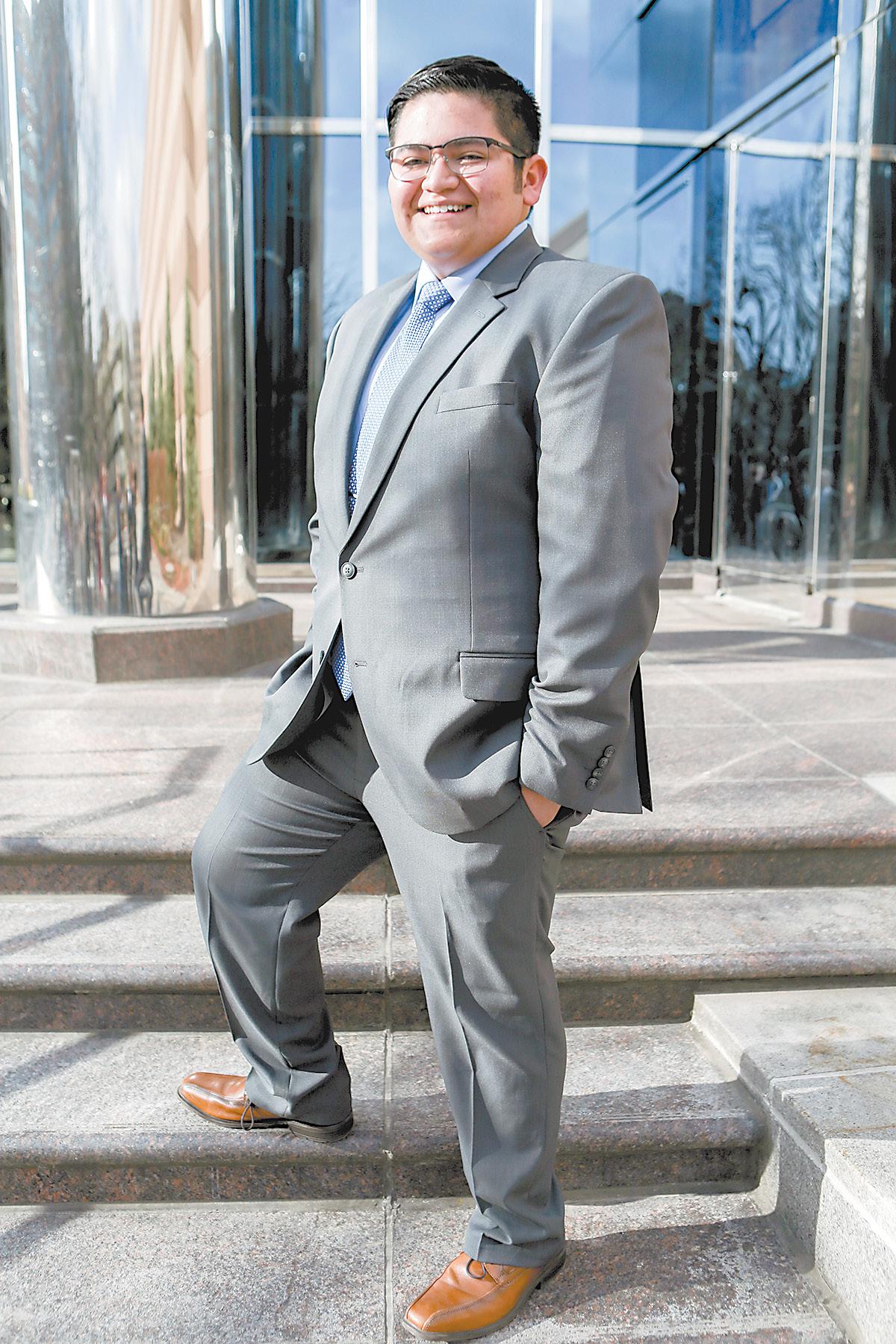
FOTO DE OSV NEWS | CABALLEROS DE COLÓN
Kendrick Castillo, católico, sonríe en una foto sin fecha. El estudiante de 18 años de la escuela STEM School Highlands Ranch, en Colorado, perdió la vida el 7 de mayo de 2019 al intentar proteger a sus compañeros de clase de un tirador. El obispo James R. Golka, de Colorado Springs, Colorado, anunció a finales de julio de 2025 que su oficina “estudiaría y discerniría” la “enorme tarea” de determinar si se abre una causa de canonización para Castillo.
En el video, John dijo que su hijo, que destacaba en robótica e ingeniería, se trasladó a la escuela autónoma de Ciencia, Tecnología, Ingeniería y Matemáticas (STEM por sus siglas en inglés), por recomendación de un profesor de su escuela católica, ya que esta escuela estaba equipada con la tecnología y los laboratorios que tanto le entusiasmaban a su hijo.
Los sacerdotes presentaron 80 páginas de material al obispo Golka, que incluían una entrevista con los padres de Kendrick.
7-13 DE SEPTIEMBRE
Domingo: Sab 9,13-18b, Sal 89,3-4.5-6.1213.14 y 17, Flm 9-10.12-17, Lc 14,25-33
Lunes (Fiesta de la Natividad de la Santísima Virgen María): Miq 5,1-4a o Rom 8,28-30, Sal 13,6ab.6c, Mt 1,1-16.18-23 o Mt 1,18-23
Martes (Memoria de san Pedro Claver, presbítero): Col 2,6-15, Sal 144,1b-2.8-9.10-11, Lc 6,12-19
Miércoles: Col 3,1-11, Sal 144,2-3.10-11.1213ab, Lc 6,20-26
Jueves: Col 3,12-17, Sal 150,1b-2.3-4.5-6, Lc 6,27-38
Viernes: 1 Tim 1,1-2.12-14, Sal 15,1b-2a y 5.78.11, Lc 6,39-42
Sábado (Memoria de san Juan Crisóstomo, obispo y doctor de la Iglesia): 1 Tim 1,15-17, Sal 112,1b-2.3-4.5 y 6-7, Lc 6,43-49
Afirmaron haber recopilado suficiente información preliminar para clasificarlo en tres de los cuatro criterios necesarios para ser santo. Estos incluyen la nueva categoría creada por el difunto Papa Francisco de “ofrenda de la vida”, en la que una persona sacrifica su vida por el bien de otra, el martirio o haber demostrado
14-20 DE SEPTIEMBRE
Domingo (Fiesta de la Exaltación de la Santa Cruz): Núm 21,4b-9, Sal 77,1bc-2.3435.36-37.38, Flp 2,6-11, Jn 3,13-17
Lunes (Memoria de Nuestra Señora de los Dolores): 1 Tim 2,1-8, Sal 27,2.7.8-9, Jn 19,25-27 o Lc 2,33-35
Martes (Memoria de los santos Cornelio, papa, y Cipriano, obispo, mártires): 1 Tim 3,1-13, Sal 100,1b-2ab.2cd-3ab.5.6, Lc 7,11-17
Miércoles: 1 Tim 3,14-16, Sal 110,1-2.3-4.5-6, Lc 7,31-35
Jueves: 1 Tim 4,12-16, Sal 110,7-8.9.10, Lc 7,36-50
Viernes: 1 Tim 6,2c-12, Sal 48,6-7.8-10.1718.19-20, Lc 8,1-3
Sábado (Memoria de san Andrés Kim Taegŏn, presbítero, y san Pablo Chŏng Hasang y compañeros, mártires): 1 Tim 6,1316, Sal 99,1b-2.3.4.5, Lc 8,4-15
una virtud heroica. (El cuarto criterio es la reputación de santidad).
“Al escuchar a John y María compartir la historia de la vida de su hijo, nos quedó muy claro que era una persona auténticamente santa”, dijo el padre Bierbaum. “Ahora bien, no somos el padre ni yo quienes tomamos esa decisión oficialmente para la Iglesia, pero esa fue la impresión que tuvimos... incluso antes del acto heroico, él simplemente vivió una vida que fue (muy) de fe, servicio, santidad y cuidado de los demás”.
En una publicación de diciembre de 2019 en el sitio web de los Caballeros de Colón, John Castillo describió a su hijo como “un catalizador del amor” cuya devoción a Dios era “lo más importante”. El adolescente, que colaboraba como voluntario con su padre en los eventos de los Caballeros de Colón, tenía previsto unirse a la orden después de graduarse en el instituto. Su padre dijo que, para Kendrick, “nada era más importante que ayudar a los demás”. “Todas estas acciones virtuosas que realizó a lo largo de su vida, a nivel personal, estoy convencido, le llevaron a hacer lo que fue capaz de hacer, por supuesto, con la gracia de nuestro Señor. Pero, sin embargo, el desarrollo de esa virtud hace posible responder a esa gracia. Y estoy seguro de que eso le permitió hacer lo que hizo ese día, lo que llevó a salvar muchas vidas”, afirmó el padre DiLoreto. En la declaración del 29 de julio del obispo Golka al recibir los materiales de los dos sacerdotes, el prelado dijo que “parece claro que Kendrick era un joven excepcional”. El obispo instó a “todos” a buscar en privado la intercesión del joven ante Dios, “rezando especialmente por los jóvenes de nuestra diócesis, para que emulen su ejemplo de fortaleza y generosidad”.
Los dos sacerdotes también animaron a rezar en privado por su intercesión y confirmaron que, después de que se hiciera pública su petición, algunos fieles les dijeron que ya lo habían estado haciendo desde la muerte de Kendrick.
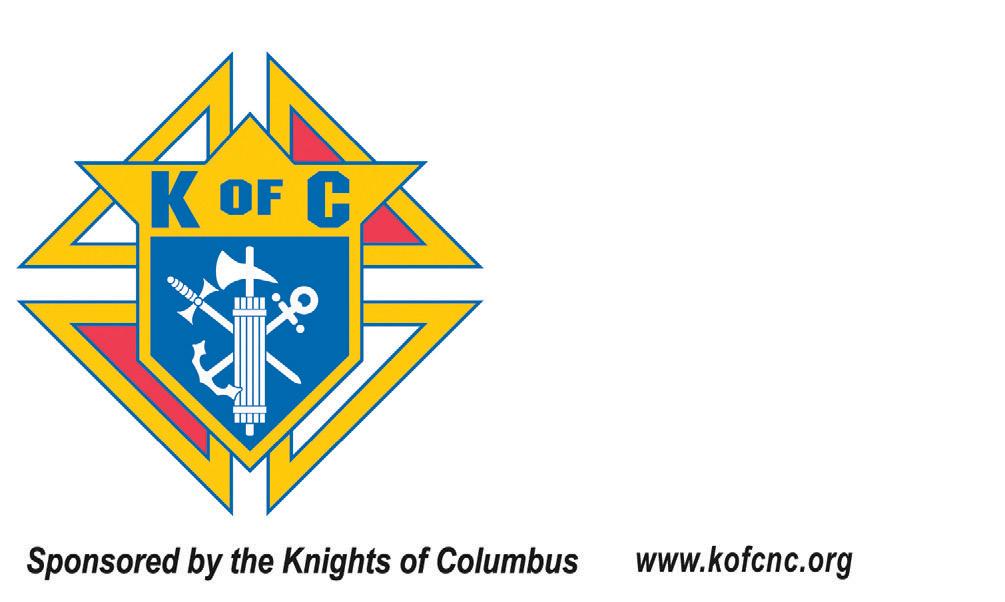
Frederick Dobens
8/24/2000
Joseph Smith 8/28/2012
Charles Dietsch 8/31/2017
Please pray for the following deacons who died during the month of August: Sponsored by the Knights of Columbus www.kofcnc.org
Charlotte Convention Center | GRATIS

Encuentren la esperanza. Renueven su espíritu. Caminen con Cristo.

El Congreso Eucarístico es un camino de renovación y una invitación a compartir la esperanza. Ven por una hora o los dos días: ¡es gratis y exible!


INVITADOS ESPECIALES




Más información:
¡No te lo pierdas! ¡Queda solo una semana!
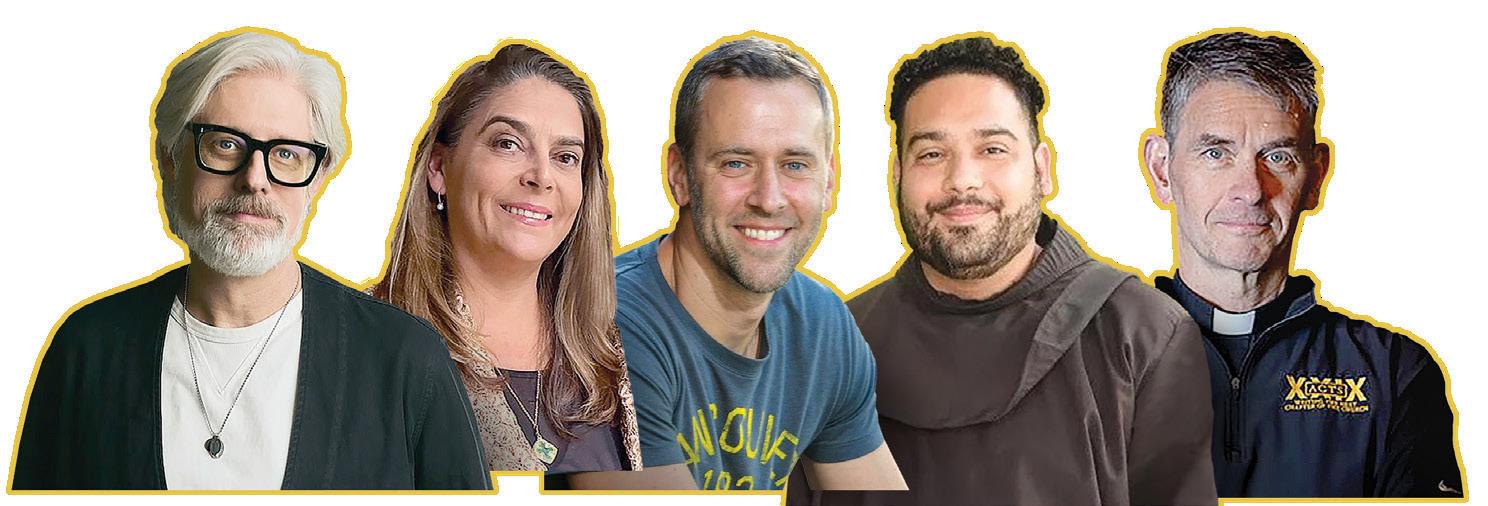
Y ADEMÁS

PROCESIÓN EUCARÍSTICA Y ADORACIÓN
SANTA MISA CONFESIONES
ARTÍCULOS CATÓLICOS ÚNICOS
ACTIVIDADES ESPECIALES PARA JÓVENES DE SECUNDARIA Y BACHILLERATO


PROYECCIÓN DE LA PELÍCULA FUNCIONES: 3 P.M. SABADO

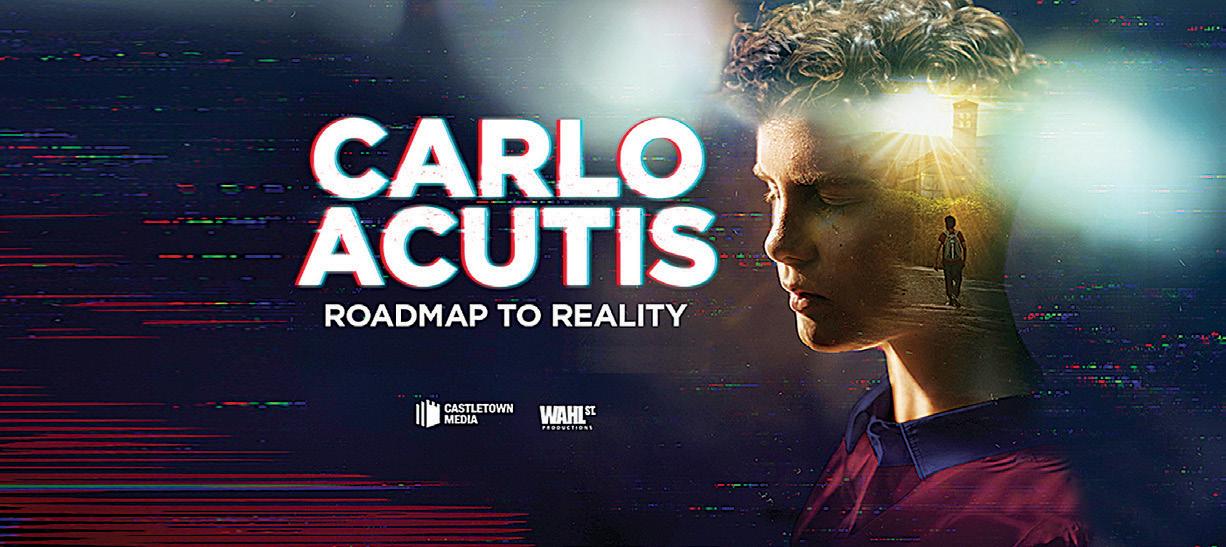

redes sociales y ofreció una respuesta ... si estamos dispuestos a escuchar.
desfiladero del río Nantahala, partiendo de Bryson City al amanecer a bordo del tren de vapor Great Smoky Mountains Railroad. En lugar de dividirse para distintas excursiones como estaba previsto, el grupo decidió permanecer unido.
“Todos consideraron que valía la pena continuar el lazo que habían creado”, dice el padre O’Connor. “Incluso todos contribuyeron (para cubrir boletos) y asegurar que nadie quedara fuera.”
Durante 4 horas y media, la locomotora de vapor siguió el río Nantahala y bordeó el lago Fontana, ofreciendo vistas impresionantes del desfiladero mientras reflexionaban sobre la creación de Dios.
Teresa Pérez lo describió como un momento de unión: “Estas son personas que antes solo conocía de vista los domingos, pero ahora, poder pasar tiempo con ellas y platicar, por ejemplo, sobre nuestros hijos, fue maravilloso.”
De regreso en Bryson City, se dirigieron a la parroquia misionera de San José. Bajo un sol abrasador saludaron al padre Victor Ameh y caminaron por el único pasillo de la iglesia para sentarse a orar. Rodeados de una arquitectura sencilla de madera y un altar modesto, el grupo encontró más momentos de reflexión en silencio. En lo alto de una colina sobre Cherokee, la última parada fue la Misión Nuestra Señora de Guadalupe, donde asistieron a una misa en español y convivieron con sus feligreses hispanos. Dedicada en 1966, fue la primera iglesia católica construida
en la reserva indígena Cherokee, en un terreno donado por un converso católico y aprobado por el consejo tribal y el jefe.
El diseño único de siete lados de la iglesia fue inspirado en una casa de consejo cherokee, con mosaicos en el piso que representan las siete tribus, una fusión de tradiciones católicas romanas y nativas americanas. Una enorme vidriera de la Virgen de Guadalupe corona el templo, simbolizando la unidad espiritual del viaje.
“La gente, en su mayoría mexicana, estaba tan emocionada con esa magnífica vidriera de la Virgen de Guadalupe”, dice el padre O’Connor, “y se emocionaron mucho al ver la imagen de San Juan Diego, pero en vez de ser azteca, estaba representado como un nativo cherokee. Creo que realmente sintieron un parentesco con los nativos cherokee.”
José Andrade se llenó de alegría por la experiencia de la peregrinación, llamándola un “escape” de los retos cotidianos y la ansiedad que siente parte de la comunidad.
“Esto nos ayuda a relajarnos un poco”, dijo. “Nos permite salirnos de la rutina. Nos ayuda mucho, gracias al esfuerzo del padre O’Connor.”
De regreso en casa, el padre O’Connor reflexionó: “Cualquiera sea la experiencia que tengas durante la peregrinación, ya sean momentos de gran espiritualidad o de dificultad, recuerdas que Dios está allí y camina contigo. No estás solo, y lo haces en comunidad.”
Estaba a punto de borrar el chat grupal con fotos y mensajes del fin de semana, pero se detuvo al recibir un mensaje: “No borre esto, por favor, porque queremos poder hablar con todos ustedes para siempre y que esto no termine.”

The culminating event, Saturday’s meal packing, was where food was assembled, boxed and trucked on 18-wheelers to a shipping container. The container then set out from Charlotte’s “country roads” to the dirt roads of India, Venezuela and Cuba to help feed those in need.
Parishioners were joined by community members, diocesan clergy and brothers from the Missionaries of the Poor monastery in Monroe, among others.
The work was split into four, two-hour shifts, each with 30 tables worked by 10 volunteers. Each person had a job, from scooping rice, dried vegetables and other ingredients into bags to weighing, sealing and packing them into cartons. Each table packed 12 boxes of 36 meal packs, and every shift ended with a prayer and a cooked sample of what they had prepared.
It was a first-time experience for some volunteers, including Bishop Martin, who joked with children and danced to “Sweet Caroline” while he weighed bags of food. For others, including Father Patrick
Cahill, St. Matthew’s new pastor who was appointed in July, it was something they grew up doing.
“I did this with my children when they were growing up, and now, we bring the grandchildren,” volunteer Mary Pat Nanney explained, gesturing toward Carson and Emery, 6 and 9. “It’s just something fun and easy to do and a way to teach them to help others who are less fortunate.”

The day meant even more to volunteer Will Kennedy, who has met the people the event will help during mission trips.
“Going to Haiti was a life-changer; malnourishment over there looks different,” Kennedy said. He was one of hundreds of yearlong volunteers working behind the scenes to help bring the drive to life.
St. Matthew previously sent its food containers to Haiti but shifted to Cuba this year due to the political climate. Funding, however, will be wired to the Missionaries of the Poor and St. Marc Catholic School in Haiti so they can purchase food locally.
“This drive builds a bridge of hope from our parish to the millions facing food insecurities globally,” Favory said, “with (some) money and food kept here to support our local brothers and sisters.”
MARIA WIERING OSV News
ST. PAUL, Minnesota — A deadly mass shooting took place the morning of Aug. 27 at Annunciation Catholic School in Minneapolis shortly after the start of the school day during an all-school Mass at the adjacent Annunciation Catholic Church.
The gunman shot from the outside of the church through windows at Mass attendees with a rifle, shotgun and pistol, killing two children, ages 8 and 10. According to Minneapolis Police Chief Brian O’Hara, 17 others are injured, including 14 children as of press time Wednesday.
The suspected gunman is also dead and believed to have taken his own life in the parking lot.
The nearby Richfield Police Department stated earlier that “a man dressed in all black and armed with a rifle was reported at the scene.”
The shooter is yet to be publicly identified. O’Hara described the suspect as in his 20s and dressed in black. He said an apparent smoke bomb had also been found.
O’Hara confirmed that at least two of the church’s exterior doors had been barricaded with two-by-four wooden boards.
Aug. 27 was the third day of the school year for the Catholic elementary school,
which serves students in preschool to grade eight. Students were attending an all-school Mass that began at 8:15 a.m. local time. Authorities were alerted at 8:27 a.m.
Minneapolis Mayor Jacob Frey joined O’Hara in speaking to media on the scene. Dr. Thomas Wyatt, chair of emergency medicine at Hennepin County Medical Center, a Level 1 trauma center in downtown Minneapolis, provided an update on victims’ status. He said 11 patients were taken to HCMC, among them two adults and nine children ages 6-14.
Father Erich Rutten, pastor of nearby St. Thomas the Apostle Parish, arrived on scene this morning to pray with and comfort distraught and grieving parents at the school.
The priest told NBC News that parents were in “great, great anxiety and grief,” with some “wailing and crying, some stooping to the ground.”
He told the news outlet that he hugged those he recognized; several of them joined in as he prayed the rosary.
On its website, the archdiocese posted, “Please pray for all those affected by the shooting today at Annunciation in Minneapolis. Updates to come from The Catholic Spirit.”
Bishop Kevin T. Kenney, auxiliary bishop of St. Paul and Minneapolis who grew up attending Annunciation Parish, told a local

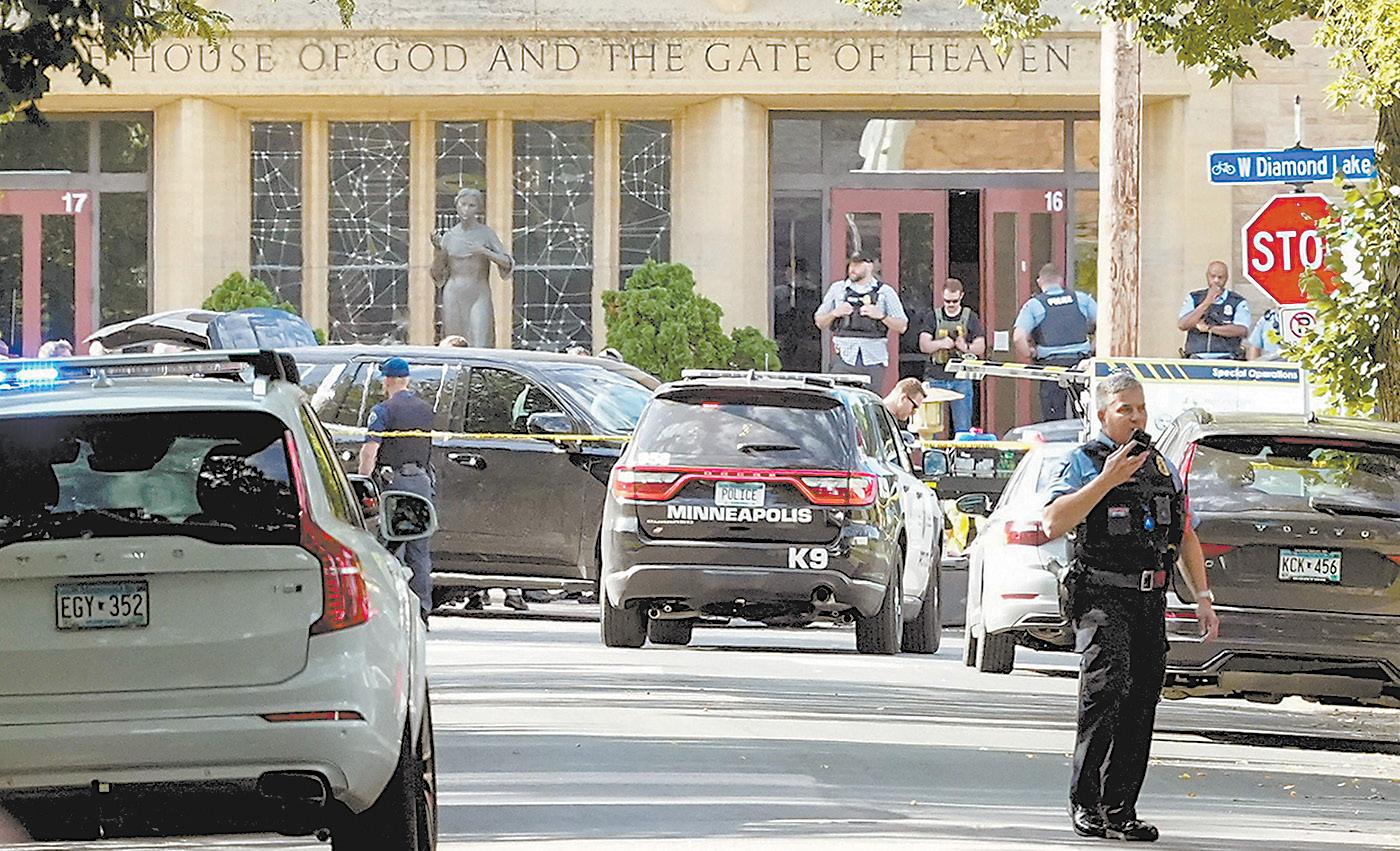
news station that “it’s just unbelievable that this could happen, still today.”
It’s “very sad for the community, for the families, and very sad for the families who
have lost loved ones,” said Bishop Kenney, speaking at HCMC.
“It’s a horrible, horrific way for all the students to begin the school year,” he said.
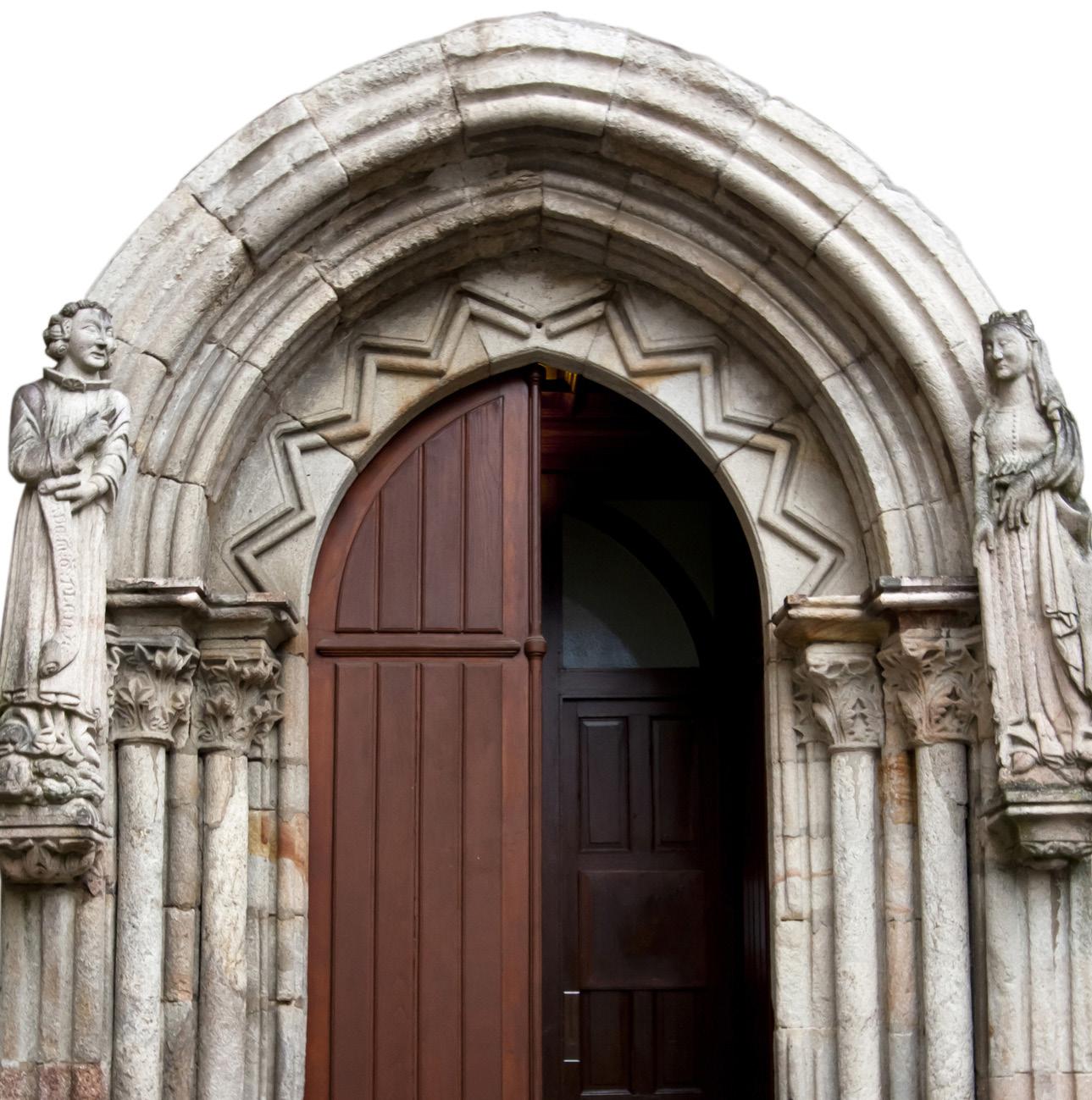
AI ‘resurrections’ raise ethical issues, prolong grief, say experts
PHILADELPHIA — Interactive recreations of deceased loved ones through artificial intelligence – so-called “AI resurrections” – walk a fine line between honoring and betraying individuals, while raising several ethical issues and prolonging the grieving process, Catholic experts told OSV News.
As AI technology has progressed, trained on increasingly larger amounts of data, several companies throughout the world have rolled out “digital avatars,” or “deadbots,” of deceased persons for bereaved family and friends, who can simulate conversations with the digital creations.
With AI memorialization of the dead, “there’s a right way to do it and the wrong way to do it,” said Brian Patrick Green, director of technology ethics at Santa Clara University’s Markkula Center for Applied Ethics. Green, who is also a member of the Vatican’s AI Research Group, said, “It’s not good to think that we can digitally resurrect people. … It’s a mockery of the word ‘resurrection,’ and it shouldn’t even be used.”
Such avatars stand to “ultimately hinder the process of grief and bereavement” by generating “a lot of confusion,” said Patrick Metts, a licensed professional counselor, associate director of the Archdiocese of Atlanta’s Office of Evangelization and Discipleship, and author of a nationally used bereavement ministry training course. At the parish level, the faithful can offer
meaningful support to those grappling with the death of a loved one, said Metts.
SAN ANTONIO — A federal judge on Aug. 20 partially blocked Texas from enforcing a law requiring public school classrooms to display the Ten Commandments, finding the law violated the First Amendment.
The Texas law, SB 10, is scheduled to go into effect on Sept. 1. The Texas attorney general has said he will appeal. A group of plaintiffs, comprised of both religious and nonreligious families, represented by organizations including the American Civil Liberties Union and Americans United for Separation of Church and State, sued in response, arguing the law violated the First Amendment.
U.S. District Court Judge Fred Biery issued a ruling blocking enforcement of the law in the plaintiffs’ school districts. The ruling will still allow the law to go into effect in other districts in the state, however another lawsuit naming three Dallas-area districts is still ongoing.
Rick Garnett, a professor of law at the University of Notre Dame and director of the Notre Dame Program on Church, State & Society, said in comments shared with OSV News, “Given the precedents of both the Supreme Court and the Court of Appeals, it is not particularly surprising that a federal trial court would block this Texas law.”
WASHINGTON, D.C. — A federal appeals court temporarily blocked a federal land transfer to a copper mining giant that would lead to the destruction of a site considered sacred by Indigenous peoples.
In an Aug. 18 temporary restraining order, the 9th U.S. Circuit Court of Appeals blocked the transfer of a piece of land containing Oak Flat in Tonto National Forest to Resolution Copper, a foreign-owned mining company, while the lawsuit proceeds. President Donald Trump said Aug. 19 his administration would continue to pursue that land transfer.
In May, the U.S. Supreme Court rejected an appeal from a coalition of Western Apache people, along with other Native American and non-Indigenous supporters, that sought to protect their sacred site at Oak Flat, known by the Apache as Chi’chil Bildagoteel.
Several of the group’s supporters from a range of religious organizations, including the U.S. Catholic bishops and the Knights of Columbus, argued the case had implications for the scope of the Religious Freedom Restoration Act.
ATLANTA — Several hundred Catholic sisters gathered in Atlanta Aug. 12-15 for the annual assembly of the Leadership Conference of
Women Religious.
The meeting drew elected leaders of congregations across the U.S., representing about two-thirds of all women religious in the country. With the theme “Hope Unbroken: Journeying in God’s Promise,” the sisters reflected on how to navigate the challenges facing religious life today.
Sister Kathy Brazda, LCWR’s outgoing president, acknowledged the steep decline in their numbers – from nearly 80,000 sisters in 2000 to around 35,000 today, according to Georgetown University’s Center for Applied Research in the Apostolate.
Many congregations are aging, merging and stepping back from long-standing ministries. But Sister Kathy encouraged attendees to embrace this moment as a call from God. “Like it or not, we have been chosen … to be the people for these times,” she told the group.
Among the speakers was Jesuit Father James Martin, a bestselling author and Vatican consultor, who acknowledged the mix of emotions faced by sisters of “joy and hope and griefs and anxieties” as they look to the future. But he encouraged them to trust like Lazarus, listening for the one “who was calling him.”




Abundant amenities and a unique way of life
e Pennybyrn lifestyle is packed with amenities. Living here, you’ll swim laps in a stunning, indoor heated saltwater pool, stay t in a well-equipped facility and power walk, bike or stroll along scenic walking trails. Even membership at Jamestown Park Golf Course is included!
ere’s also the Pennybyrn di erence… and this is what truly sets us apart. You’ll nd a lovely Peace Chapel, a not-for-pro t mission to serve all faiths,
a smaller population for personalized service and inclusiveness that means your voice will always be heard.
A thoughtfully designed home
Your private residence at Pennybyrn—chosen from among a variety of oor plans and prices— will feature a bright, open design with plenty of natural light, a well equipped, modern kitchen, washer and dryer, high ceilings and a private porch, balcony or patio.
Most cottages include an attached garage or carport, and many o er a cozy replace.
In a friendly neighborhood, and among sociable friends, you’ll explore a wealth of programs that are planned and shaped by fellow residents. Quiet times will nd you gathering in beautiful outdoor areas and inviting indoor spaces— including world-class dining choices and a true Irish Pub.
Our purpose at Pennybyrn is to make sure that your vibrant lifestyle is enjoyed with the lifelong support, assurance and bene ts of a Life Plan Community.

MARIA WIERING OSV News
In a well-circulated photo, Blessed Pier Giorgio Frassati appears to pause during a mountain hike and leans against his walking stick while smoking a pipe. His posture is relaxed and confident.
For many, the visual takeaway is that Frassati is someone they could imagine among their friends, a soon-to-be saint somehow like them.
“The No. 1 thing I get with Pier Giorgio is relatability,” said Christine Wohar, FrassatiUSA executive director. “He shows us how we can … be holy in the normalcy of our lives.”
He was attractive, manly, rugged, humorous and athletic, she noted. He was devoted to the Eucharist and Mary and time spent in adoration and praying the rosary. He came from a wealthy family but was also committed to charity, as well as larger social causes and faith-based activism.
But, Wohar said, he also had relatable challenges: His parents’ marriage was on the verge of legal separation, he struggled to balance his studies with other commitments, he wrestled with whether to date a girl he loved, and he was misunderstood by family members.
Pope Leo XIV plans to canonize the Turin native, who died in 1925, alongside fellow Italian Blessed Carlo Acutis Sept. 7.
‘TO THE HEIGHTS’
Wohar and others spent late July and early August visiting Italy’s Frassatirelated sites before attending Jubilee events in Rome. There they venerated Frassati’s relics in the Basilica of Santa Maria sopra Minerva, where his body had been temporarily relocated from Turin for the Jubilee celebration.
On that casket was inscribed a phrase that many of his devotees have made their personal adage: “Verso l’alto” (“To the heights”). He wrote the phrase on another photo that had been taken of him mountaineering, gripping a rockface while looking toward the summit on his last climb.
Pier Giorgio Michelangelo Frassati was born April 6, 1901, in Turin to Adelaide
Ametis, a painter, and Alfredo Frassati, a newspaper businessman and politician who served as an Italian senator and ambassador to Germany. Even as a child, Pier Giorgio sought to receive daily Communion.
Fortified by a robust prayer life rooted in Marian devotion and the Eucharist, at age 17 he joined the Society of St. Vincent de Paul to care for the poor and the wounded soldiers returning home from World War I. He was known for giving money and his possessions to people in poverty.
His concern for marginalized and downtrodden people influenced his decision to study mining engineering at Royal Polytechnic University of Turin, with the aim of ministering among the miners. His studies suffered because of the amount of time he dedicated to helping the poor and political activism. In 1919, he joined Catholic Action, which promoted the Church’s social teaching.
Two years later, he helped to organize in Ravenna the first Pax Romana conference, which aimed to unify Catholic university students to work for worldwide peace. In 1922, he joined the Lay Dominicans, also known as the Third Order of St. Dominic, choosing the name “Girolamo” after the fiery 15th-century Dominican preacher in Florence, Girolamo Savonarola.
‘HE MADE RELIGION LOOK FUN’
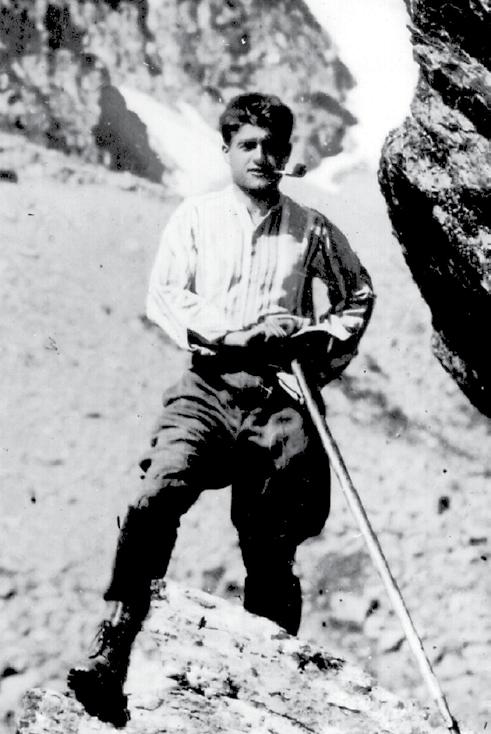
CNS
“He was an explosion of joy. He was the life of the party.”
But at church, he was reverent and composed, “all business with the Lord,” she added.
“He made religion look fun and attractive,” Wohar said. “Stories are told about how he would make wagers, and if he won that, his friends would have to go to adoration or Mass or pray the rosary or something. He believed that the apostolate of persuasion was the most beautiful and most necessary to help your friends find the ways of God.”
Frassati also engaged in fist fights for his faith-based political convictions – on more than one occasion – in scuffles with Communists, Fascists and crowd enforcement during activist rallies.
Amid his studies, social life and political activism, Frassati continued to take seriously his spiritual life, charitable works and evangelistic efforts, wasting no opportunity to invite his friends to join him in prayer, Scripture reading or at Mass. In late June 1925, Frassati began to experience symptoms of polio, likely contracted while visiting Turin’s sick and poor.
He died July 4, 1925, at age 24, and his funeral was attended by hundreds of his city’s poor, revealing to many, especially his family members, the fullness of his charity. He was initially buried in the family crypt in the nearby city of Pollone, but his body was moved to the Cathedral of St. John the Baptist in Turin after his beatification in 1990.
While a cause for Frassati’s canonization opened shortly after his death, it stalled for a time. Wohar said she believes that is part of God’s plan.
Throughout his young adulthood, he was an avid outdoorsman and enjoyed skiing and mountaineering, art and music, and poetry

and theater. He regularly gathered together his friends and was known to be a practical joker, shortening his friends’ bedsheets and waking them with trumpet blasts, ultimately earning the nickname “Fracassi,” as in “fracas” – a noisy disturbance.
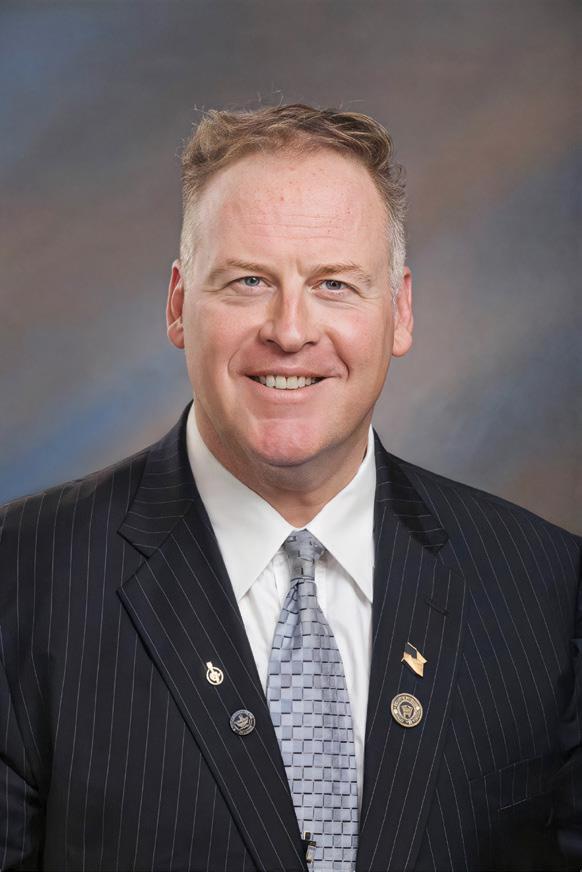
“He knew how to have fun,” Wohar said.
“If he had been canonized, say, in the 1940s, we might never even have him on our radar,” she continued. “He would have maybe gone into obscurity as one of the many, many, many Italian saints. The fact that he is being canonized in this Jubilee Year of Hope, when we need hope in our culture, I think he presents a picture of hope for young adults – for everybody, but particularly for that age range.”
She added, “It’s God’s perfect timing.”
PARIS — For the first time since its reopening in December 2024, Notre Dame Cathedral in Paris marked the feast of the Assumption with a solemn outdoor procession.
On Aug. 15, more than 3,000 faithful filled the streets of the Île de la Cité, honoring the Virgin Mary in a tradition interrupted for five years by the cathedral’s post-fire restoration.
The celebrations began the evening before with a candlelit procession inside the cathedral, veneration of the crown of thorns, and the historic reading of King Louis XIII’s 1638 vow consecrating France to Mary.
Auxiliary Bishop Emmanuel Tois led the Assumption procession and later celebrated Mass inside the cathedral on Aug. 15, noting a growing resurgence of popular piety in France.
This Jubilee Year, worshippers also saw the return of a silver Marian statue dating back to 1826, carried once again through the streets.
French bishops used the occasion to call for prayers for unity, respect for life and guidance for national leaders.
KALOOR, India — A lay movement in India’s Syro-Malabar Catholic Church is calling for stronger representation of the laity in Church governance after hosting what it said was the
first-ever “lay synod.”
The Aug. 15-16 gathering, held in Kaloor in southern Kerala state, brought together about 300 delegates under the banner of Almaya Munnettam (meaning “lay forward”), a group of lay Catholics in the Archdiocese of ErnakulamAngamaly, which organized the event.
Organizers said the synod embraced the spirit of the Vatican’s Synod on Synodality 2024 by amplifying the voices of laypeople, women and marginalized groups. In a statement, participants resolved to demand 50% lay representation in all decision-making bodies, with women making up 40% of that share. They also called for diocesan synods, a wider “Church Synod” including clergy and laity, and new structural guidelines to ensure transparency.
The resolutions will be presented to bishops gathered for their annual synod in Ernakulam.
The Syro-Malabar Church, with nearly 5 million Catholics, is the second-largest among the 23
Eastern Catholic churches in full communion with the Vatican.
KHARKIV, Ukraine — As the Trump administration seeks to end Russia’s multiyear war on Ukraine, Russian attacks on Ukrainian civilians continue, said Metropolitan Archbishop Borys A. Gudziak of the Ukrainian Catholic Archeparchy of Philadelphia.
Archbishop Gudziak traveled to Ukraine two days after the Aug. 15 summit between President Donald Trump and Russian President Vladimir Putin in Anchorage, Alaska.
Ahead of an Aug. 18 White House meeting among Trump, Ukraine President Volodymyr
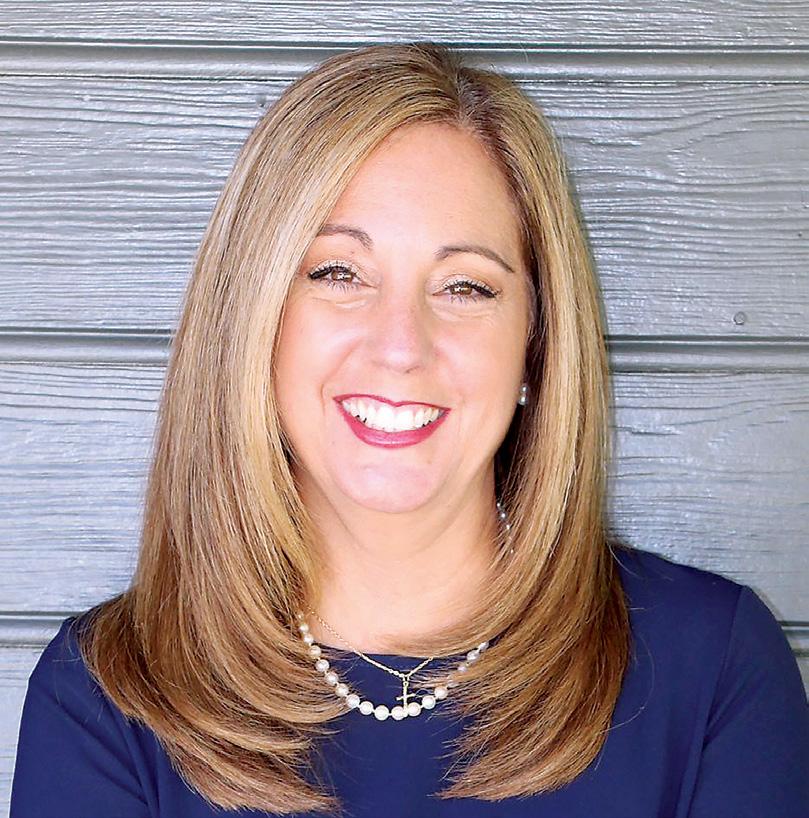
Zelenskyy and several leaders, Russia launched attacks on multiple Ukrainian regions – including an apartment building in Kharkiv, the ruins of which Archbishop Gudziak visited Aug. 19. In two videos, the archbishop recounted how the latest attacks had killed an entire family, and he urged the faithful to help bring a just end to Russia’s full-scale invasion of Ukraine –which continues attacks initiated in 2014 and which has been declared a genocide in two joint reports from the New Lines Institute and the Raoul Wallenberg Centre for Human Rights. “Let us stand together. Let us stand for the victory of God’s truth, and not this kind of barbarity – the killing of children, the killing of families, the killing of innocent people who just want to live and be free,” said Archbishop Gudziak.


Banquet Speaker
Luke Kuechly
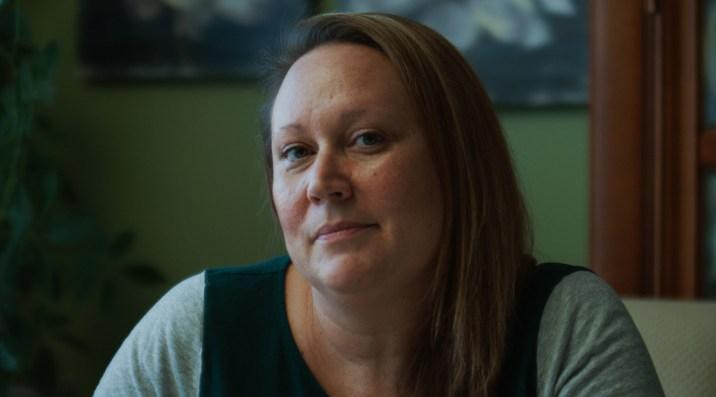

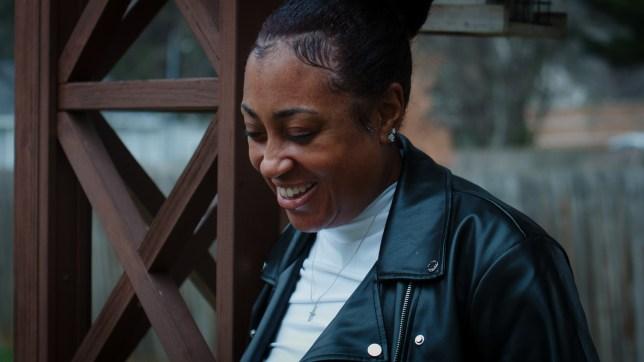

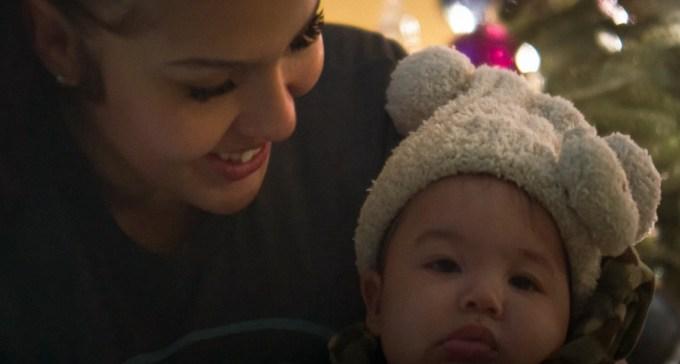
eight years of his career with the Carolina Panthers. He was a seven-time Pro Bowler and a five-time first-team All-Pro. He had immediate success during his 2012 rookie season. In that debut campaign, he led the NFL in tackles and was named
Luke spent all eight years of his career with the Carolina Panthers. He was a seven-time Pro Bowler and a five-time first-team All-Pro. He had immediate success during his 2012 rookie season. In that debut campaign, he led the NFL in tackles and was named NFL Defensive Rookie of the year.



case management, day care, transportation, job training, life skills and parenting education in a structured environment, we help these families have new lives of healthy, hope-filled self sufficiency.
Licensed by NCDHHS and accredited by the Council on Accreditation, Room At The Inn is a prolife ministry of the Catholic chu rch and is listed in the Official Catholic Directory (P.J. Kenedy & Sons).


To register: Please visit www.RoomInn.org OR use the QR Code For more information, please contact Tammy Singleton at 336 -391 -6299 / TSingleton@roominn.org or Katie Schneider at KSchneider@RoomInn.org Reservations are free, but required. A donation will be requested. Room At
To
Annual Benefit Banquet





Jason Adkins
In our era of war, drone strikes and simmering nuclear tensions, Catholics must bring the Gospel to bear on global affairs, not merely in prayer, but in policy, and hold their leaders accountable in doing so.
For too long, American foreign policy has been animated by a belief in “American exceptionalism” – the idea that the United States is a singular, divinely favored nation destined to lead the world – and a determination to preserve its role as the sole superpower.
Yet this vision, however noble it may sound, has had devastating consequences: perpetual war, collapsed states, millions of lives lost and the ever-present specter of nuclear catastrophe.
Two Catholic thinkers, Patrick J. Buchanan and Andrew Bacevich, have issued prophetic critiques of this imperial orientation. Although differing in political perspectives, both warn that the pursuit of American dominance betrays Christian moral teaching and endangers the world we claim to lead.
To understand why American foreign policy has become so reckless, one must first examine the myth that sustains it: that America is exceptional, a “city upon a hill,” uniquely tasked with spreading democracy and freedom. This selfimage often blinds policymakers to the limits of power, the sovereignty of other nations and the cost in human life of our military interventions. It creates a moral framework where U.S. actions, however violent, are always justified, while resistance is labeled as terrorism or tyranny.
This vision of global leadership is not rooted in humility but in hubris. In the nuclear age, such pride could lead not only to our fall, but to the annihilation of life on Earth.
Buchanan, a Catholic and longtime critic of interventionist foreign policy, has consistently warned against America’s addiction to empire. He argues that America’s founders envisioned a nation dedicated to liberty at home, not military hegemony abroad.

This August marks the 80th year of the atomic age that began with the first and most recent use of nuclear weapons – on Japan just before the end of World War II. I say “most recent” instead of “last” because, while nuclear bombs have not been deployed as weapons since then, no one believes they never will be again. Under the “right” circumstances against the “right” enemy, there is little doubt that a future leader will decide to press the button as President Truman did in 1945. Then, America was fighting on the right side of what may have been the closest thing to a just war in all of human history. It is true that bombing Hiroshima and Nagasaki hastened the end of the war. Using its immensely destructive power meant that a long and costly invasion of Japan could be avoided. The justification given for dropping the bomb was that it would save American lives. Between 150,000 and 246,000 Japanese – mostly civilians – died as a result of the attacks. For Catholics, the calculus matters. When we judge the morality of an act by whose lives it will save, we have already surrendered any high ground we might have claimed. We should never forget that war is always evil and that even when a war we fight is just, our conduct of it may not be. We ought to be asking questions that may make us uncomfortable. Is it possible to use weapons capable of destruction on the nuclear scale proportionally? And given that divine math does not give more weight to the value of the lives on one side of a conflict than it does to those on the other, is it moral for us to do so?

He sees American exceptionalism not as virtue but as a vice that leads to overreach and endless war. He opposed the Iraq War, the expansion of NATO, and the demonization of Russia and China, viewing them not as moral crusades but as provocations rooted in imperial ambition. His position is deeply realist: He urges a return to national interest, regional diplomacy and restraint.
Catholics can draw from Buchanan’s views a vision of foreign policy grounded in just war teaching. War must always be a last resort, waged for legitimate defense – not to impose ideological visions on unwilling nations.
Bacevich, a retired Army colonel and practicing Catholic, brings a sobering moral clarity to the discussion. A veteran of Vietnam and the father of a soldier killed in Iraq, Bacevich has lived the costs of empire. He argues that America’s drive for dominance is unsustainable, immoral and rooted in illusions about our power and virtue.
Bacevich critiques the bipartisan consensus that America must “lead” the world through force. He contends that this militarized global presence violates Catholic principles of peace, respect for human dignity and the pursuit of the common good. He calls instead for a foreign policy of humility, focused on diplomacy, development and respect for the sovereignty of other nations.
As China, Russia, India and other nations assert growing influence, the United States’ attempt to preserve unipolar supremacy is both futile and dangerous. As Pope Francis warned, we may already be living through a “piecemeal World War III,” driven by ideological divisions, arms races and the erosion of diplomacy.
Catholics are called to be peacemakers. That means advocating for a multilateral foreign policy rooted in the Gospel: One that protects life, prioritizes the poor, respects other cultures and renounces war as a tool of domination. It means moving from a world ruled by force to one governed by dialogue and cooperation.
In an age of nuclear weapons and ecological strain, the stakes could not be higher. The voices of Buchanan and Bacevich are not simply conservative or contrarian, they are Catholic in the deepest sense. They remind us that no nation, however powerful, stands above God’s law or the demands of justice.
Let us, as Catholics, work toward a world not ruled by empires, but united in peace.
JASON ADKINS is host of the podcast “Catholic in America,” available on the major podcast platforms or at catholicinamerica. osvpodcasts.com.
That’s why the past eight decades of global diplomacy have been spent desperately trying to contain how many weapons of mass destruction there are and to limit who has access to the technology and materials to build them.
Powerful nations like ours often talk about how effective the threat of overwhelming force is as a deterrent to war. But there is always a war somewhere – Ukraine, Congo and Gaza come to mind – and no matter who possesses or controls them, weapons of unprecedented destruction raise the stakes.
The working theory has been that “good” actors can be trusted not to use these weapons, and international villains can be expected to bully – or indiscriminately destroy – the rest of the world. Those who embrace that perspective note that despite nonproliferation and test ban treaties and numerous arms reduction agreements, menacing despots of countries such as North Korea and Iran are always trying to elbow their way into obtaining these weapons. Meanwhile, nations who are already members of Club Nuke ironically wield the threat of nuclear annihilation while claiming they will never use them.
There are plenty of people who think that the only effective way to respond to a bully is to out-bully him. I’m not convinced that position is consistent with our faith.
In fact, the catechism, drawing from the Pastoral Constitution on the Church in the Modern World (“Gaudium et Spes”), clearly states that it isn’t: “Every act of war directed to the indiscriminate destruction of whole cities or vast areas with their inhabitants is a crime against God and man, which merits firm and unequivocal condemnation.”
A danger of modern warfare is that it provides the opportunity to those who possess modern scientific weapons – especially atomic, biological or chemical weapons – to commit such crimes.
Most people believe that all people want peace. In reality, that may not be true. But those who do will reveal it by their actions, in how they treat their friends but even more so in how they choose to deal with their enemies.
Our faith teaches us to seek peace instead of power and to persevere in that effort instead of giving in to posturing. That demands that we acknowledge the evil that all weapons of mass destruction make possible.
Hiroshima and Nagasaki should not be held up as emblems of Western victory or American dominance, but as cautionary histories of the overwhelming force and utter destruction that is unleashed by the willingness to wage war without limits. Not only cities but souls can be destroyed, and it is not always clear to which side those casualties belong.
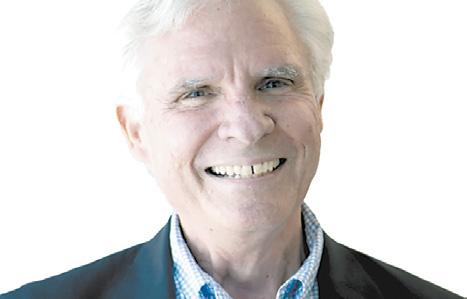
Scottish theologian John Swinton, founder of the Center for Spirituality, Health, and Disability, asks, “What does it mean to be a disciple with a vocation when you do not have the intellectual capacities that religion often demands for participation in the faith?”
The question pokes at a bias in many Christian religious traditions that the pursuit of the intellectual life is the pathway for understanding God and is what qualifies you to have something worthwhile to contribute to Christian theological discourse – as if there were no other way to know God and participate in a life of faith. I think Jesus would disagree. Jesus’ response to the one who asked him to name the greatest commandment wasn’t “to love your books with all your heart and make others love them, too.” It was simply to love. To love God first and our neighbors as ourselves (Matt. 22:37-40).
‘Profound faith and contributions to the Church aren’t limited to those who can pursue intellectual knowledge of God.’
Of course, love must be grounded in knowledge. It’s hard to love someone we don’t know or understand – including God – but in our Christian understanding there are more fundamental pathways to the knowledge of God than intellectual pursuit. I daresay far more theologians have been led away from God or to heterodox views of the Catholic faith than those whose knowledge is obtained in other ways, such as prayer and interior conversation with the Lord. It would be a defect of understanding to assume that being created in the image of God is only revealed in the human person’s ability to reason. Don’t we first know God in relationship – Father, Son and Holy Spirit? We, too, are created for relationship in the communion of our family and the Church. Let’s turn to two saints – not the great intellectuals like Aquinas or Bonaventure or Augustine or Elizabeth of the Trinity, but simple saints whose knowledge of God came from their close relationship with Jesus.
St. Joseph of Cupertino was a simple 17thcentury Franciscan friar born into poverty who was considered slow witted, awkward and absent-minded. He acquired the nickname “the Gaper” because he tended to wander aimlessly with his mouth hanging open. He failed at the simplest of trades and struggled with the most basic tasks asked of him. Even his own mother considered him a
burden and treated him harshly.
The Conventual Franciscans took him in as a servant and had him care for their stables. He came to be known for his humility, obedience and profound mystical visions and levitations during periods of intense spiritual ecstasy. He went from being disparagingly called “the Gaper” and “the Gawker” to “the Flying Saint” or “the Flying Friar.” To keep him from gaining too much attention in any one place, his superiors often moved him around from friary to friary, yet he became extremely popular for his deep love and intense devotion. He is the patron saint of students and those with learning disabilities. Was St. Joseph of Cupertino developmentally disabled? There was no such label then, but it would be fair at least to say he was “slow.” The only way he managed to make it through his seminary studies was because his examiner asked him to just explain to him the one thing he knew well. Managing that, he was finally ordained a deacon and eventually a priest.
ST. MARGARET OF CASTELLO
St. Margaret of Castello was born near Florence, Italy, in 1287 into a wealthy family. She had severe physical disabilities: She was blind and had many physical impairments, including dwarfism, a malformed arm, curvature of the spine and a short right leg. Her parents were ashamed of her and kept her hidden from sight for several years.
Eventually they took her to a shrine in Città di Castello that was known for miraculous healings, but her physical healing wasn’t in God’s providence. With no miracle, her parents abandoned her on the street. A community of nuns took her in for a time but eventually rejected her. Homeless again, she eventually became a Dominican tertiary and dedicated her life to prayer, penance and service to the sick, dying and prisoners.
She became renowned for her spiritual guidance and wisdom, and many sought her out for counsel. A multitude attended her funeral after she died in 1320, and numerous miracles began to be reported at her tomb. She is venerated now as patron saint of the poor, the unwanted and people with disabilities.
These are just two examples, but others, too, stand as witnesses that profound faith and contributions to the Church aren’t limited to those who can pursue intellectual knowledge of God. There are some today with disabilities who feel called to serve the Church as a priest or religious, but they can’t find acceptance in a diocese or community. Perhaps vocation directors need to consider the lives of the saints and discover that some of the Church’s greatest treasures in religion and holy orders are those who were once kept on the peripheries, longing to serve Jesus and His Church but not considered because of their impairments.
MARK BRADFORD is the Word on Fire fellow for persons with intellectual and developmental disabilities. He and his wife reside in the Philadelphia suburbs. This was excerpted from an article at www.wordonfire.org.

In last week’s Catholic News Herald, Pope Leo XIV tells us ‘God never gives up on anyone, even when the person betrays God’s love.’
How often do we know a loved one or friend in a situation such as this?
St. Monica suffered greatly as she watched her son, St. Augustine, choose a life of sin, living with a woman, having a child outside of marriage, and arguing against the faith in his personal life and as a teacher.
She prayed every day for his conversion. She asked her priest to speak to him. The priest, knowing his type, told her he was “unripe for instruction because” he was “brimming over with the novelty of the heresy.”
The priest also told her “Leave him alone. Just pray to God for him.”
Later, St. Monica “persisted all the more with her tears and her entreaties” that the priest speak to St. Augustine.
The priest “grew impatient and said, ‘Leave me and go in peace. It cannot be that the son of these tears should be lost.’”
St. Augustine writes in Confessions. “In later years, as we talked together, she used to say she accepted these words as a message from heaven.”
How many of our loved ones and friends need us to pray for them with the persistence of St. Monica?
JON GAUTHIER is a member of St. Matthew Parish in Charlotte and a published author.

The Catholic News Herald reached the Facebook and Instagram feeds of more than 1.58 million people in English and Spanish during the past 30 days ending Aug. 27. The most talked about post? Coverage of Father Balkey’s first military assignment. Join the conversation: www.facebook.com/CatholicNewsHerald
On YouTube in August so far, videos produced by the Catholic News Herald have been viewed more than 18,000 times. The most popular video? A New Franciscan Ministry.

The Catholic News Herald welcomes letters from readers. We ask that letters be originals of 250 words or fewer, pertain to recent newspaper content or Catholic issues, and be written from a perspective of Christian charity.
To be considered for publication, each letter must include the name, address and daytime phone number of the writer for purpose of verification. Letters may be condensed due to space limitations and edited for clarity, style and factual accuracy.



The Catholic News Herald does not publish poetry, form letters or petitions. Items submitted to The Catholic News Herald become the property of the newspaper and are subject to reuse, in whole or in part, in print, electronic formats and archives.
E-mail: catholicnews@rcdoc.org
Mail: Letters to the Editor Catholic News Herald
1123 S. Church St. Charlotte, N.C. 28203









